#This picture is depicting her in a state of mania
Explore tagged Tumblr posts
Text

Tasting the colors 🌈🌟
#It's July!! Happy mental illness month to Demonsoul!! 🎊#Okay but fr I have like... Three drawings all about Deamy's psyche#It's an aspect I don't get to talk about much which is why I decided to you know... Just draw!#This picture is depicting her in a state of mania#Everything is black and white#Loud colorless static#Her body grew numb from the exhaustion but she's still coughing up more and more colors#They're eating her from the inside out#demonsoul#my crown in red#mcir#original character#original story#furry art#fursona#oc#feder's art pile#tw eyestrain#tw self harm#eyestrain
16 notes
·
View notes
Text
let's make babies |
pairing: Harry Styles x Actress!Reader
summary: you and harry are doing a live on instagram, you've drunk a lot of wine and now the world knows that the future Mrs. Styles is ready to make babies.
warnings: mostly cute, but the title tells you what you need to know 🤪
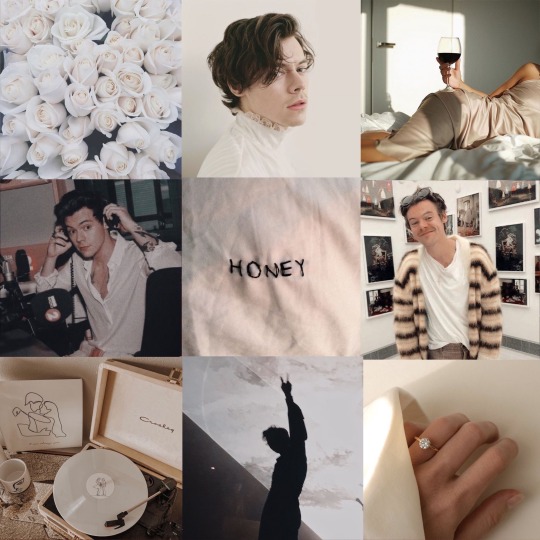
"What is your favorite song from the Fine Line album?" Y/N read aloud, twirling in her right hand the second glass of wine of the evening, the one already halfway through. "Adore You and Watermelon Sugar, of course."
Harry giggled, rolling his eyes upon hearing his fiancée's statement.
"Y/N will always choose Adore You because it was obviously written for her." He accused. "She wouldn't give that answer under different circumstances."
The comments climbed up the screen continuously, most fans gushing about how cute Harry Styles and YN/LN could be while the other part was concerned with wringing even more information out of the slightly inebriated couple who had decided to do a surprise live one early Sunday morning.
As expected after being away for some time to begin filming Don't Worry, Darling in Southern California, Harry enjoyed a lazy weekend in the house he shared with his fiancée and her pets. The days were filled with late naps and relentless Netflix marathons, sublime and ethereal evenings, marked mostly by unexpected declarations and rounds of sex that used to last until the beams of light were shyly coming through the linen curtains. They were not a monotonous couple, so this order could easily be changed.
"Watermelon Sugar is nothing more than about my love for watermelons, don't get too creative." Harry replied to a fan while sporting a corner smile, the message standing out among the rest for its dozens of emojis and large print, questioning the singer about erotic content behind the lyrics of his latest hit. "I really don't know what you guys are talking about."
Y/N laughed, shaking her head before leaning it against her fiancé's chest, propped up on the soft white pillows that were spread practically all over the bed. The air conditioner was on at a minimal temperature and a light rain whipped on the panes of glass camouflaged by the cream-colored curtain, that being the projection of Y/N's favorite nights.
"You can tell them, I'm not shy." She joked, nudging her fiancé's waist.
"You know what it was written about and who it was written for." Harry replied, raising one of his eyebrows. "That's what matters."
It went without saying that much of Harry's newest album, as well as some of his earlier work, had been done in exclusive dedication to his future wife. Y/N had been the muse for a vast repertoire of romantic songs, and even though the singer preferred to keep the story behind his more explicit compositions a "secret", the relationship the two had shared for more than three years was already solid and known enough for the media and fans to distinguish hidden messages in small details.
"It's a song about what usually comes before the act of making babies." Y/N laughed as he pointed at the display. "Honestly, you guys are impossible."
"No, we make babies every day." Harry joked, making a funny motion with his eyebrows. "I would spend my entire career writing just about that."
"Harry!" The actress exclaimed incredulously, slapping her fiancé weakly on the chest. "Children might be watching this."
"You don't want to have babies with me?" He asked falsely offended, accepting the cup that Y/N offered him. "Because I want some babies with you."
Y/N laughed, rolling her eyes as she watched the internet freak out at the dialogue that had suddenly emerged. Since the beginning of the quarantine, it was kind of inevitable that the couple of artists would not become the darlings of all social media; they were fervently active with photos, videos, and lives that depicted step by step daily life in isolation, gaining more and more followers and making the media more and more fascinated by the relationship they both shared.
The wedding was scheduled for the summer of next year and it was perhaps the most anticipated event in the tabloids. Bets about what the model of Y/N's dress would be and lists presuming who would be selected for the short list of guests stood out among countless news stories about the famous people influencing pop culture today.
The possible arrival of a Styles baby was an inevitable topic in interviews. Harry and Niall were the only members of the ex-boyband that had not become fathers yet, and because they had maintained a solid relationship and were seen as one of the most enviable couples during the last four years, Y/N and Harry had gotten used to all this openly asked questions. They didn't mind, they even had fun with the montages and all the anxiety that dominated the whole internet, often mentioning the fandoms' efforts to represent them as such "cool" parents in perfectly edited pictures.
"No, guys, I'm not pregnant." Y/N amusingly clarified the doubt of dozens of new comments. "Please don't believe so many controversial news stories that appear out there. I was on twitter last week and saw several people theorizing about a possible pregnancy, most of the arguments based on a website that used photos from the set of How to Get Away with Murder in the season where I was actually playing a pregnant woman as Laurel." She laughed. "It's so funny! I know you guys love to guess these things, but we won't hide something so special when it actually happen, I promise."
"Especially because Y/N can hide absolutely nothing from anyone." Harry accused, leaving his drink on the corner table before settling into a comfortable position for the two of them. "Anyone who's a Marvel fan knows that. That's one of her most characteristic quirks."
"They gave me a fake script for the last two movies." Y/N agreed, shaking his head. "For me and Tom."
"We agreed to keep the engagement a secret for a while. The plan was to travel to Holmes Chapel to break the news to my family in person, but guess who got a call at ten o'clock at night from an angry Anne because she learned of her son's engagement from an interview Y/N gave the next day?"
Y/N gave a guilty smile, winking gracefully at the camera. "It was all James' fault! I'm sure he already suspected something, those questions were very suspicious."
"Of course the questions were suspicious, babe. You literally said you had a secret that involved both of us but that you couldn't tell because it was important that our families knew first."
"I thought he would think about a pregnancy or something!" The actress defended herself, feeling very convincing in her intonation bordering on obviousness. "That's a mania I can't get rid of, it's in my genes."
"Did you all hear that? Further proof that you guys don't have to worry about guessing when Y/N's pregnancy will be, I'm sure our baby will make sure to tell you everything while still in the womb, mom's genes will make sure of that."
"You are so funny, Harry Styles." Y/N sarcastically stated, holding back a giggle as countless messages with laughing emojis were frantically up. "Yeah, I know I talk a lot and all, but you have annoying quirks too."
It was obvious that live would be news the next day. Although they were completely open about matters concerning their relationship, nothing seemed better than receiving so much exclusive information from a Harry and S/N drunk on expensive wine.
"You wake up in a bad mood and you're dangerously sexy, that should be illegal."
Harry laughed, holding his fiancée's waist a little tighter as he felt her tumble a little further to the side, getting closer and closer to the edge of the bed. Y/N was dangerously weak for drinks, and the singer knew that the actress' body was already near its limit.
"You're the only sexy person here, love." He declared with a corner smile, evidently finding the whole situation funny. "Do you want to go to sleep now?"
"No." Y/N shook her head. "Can we watch some movie? Can we watch Sweet Home?"
"Of course, love." He murmured, giving the woman a quick kiss on the forehead.
Even though Harry knew that his fiancée was unlikely to make it past the five-minute mark of the episode, he made sure to restart the korean series at exactly the scene where she had stopped, the first chapter still halfway through after Y/N realized that it would be impossible to watch such a macabre work without a drop of alcohol in her blood.
She had been so excited by the taste of Argentinian wine and the idea of updating her fans after a few weeks away, that she had forgotten the main purpose of the live. Harry and Y/N had been apart for a few days due to the new movie the Brit was shooting in North America, all happening in an unrestrictedly careful manner due to the restrictions caused by the pandemic.
He was slowly migrating towards acting and the future Mrs. Styles couldn't be prouder. Y/N had felt on cloud nine when Harry had given her the news of his upcoming job, but her only pronouncement on the subject had been a succinct post on instagram. Just a photo of the couple on a trip to Germany with a simple heart emoji didn't seem enough for the actress' exhibitionist soul, and coming to that conclusion was the main reason she decided to invite him, already relatively changed, for a live appearance. Y/N wanted to go on and on about how much she loved that man and work on that whole honeyed speech that would bring her (once again) the title of "cutest bride of all time," but of course Harry had to come home from his trip with his favorite red wine and poison her with those sweet caresses that took her out of orbit, turning the degree of alcohol content into the least of her problems.
"You're going to kiss Florence." Y/N exclaimed suddenly, as if only now realizing that her fiancé would share the screen with Florence Pugh, one of her closest friends in that industry. "Kiss on the mouth."
The MacBook was still open and hundreds of new comments were going up every second, but Harry didn't bother one bit to warn her about the possibility of her becoming a meme the next day. He was having too much fun with the situation to worry.
"Are you jealous?"
"Yes." She stated with a pout. "I am jealous, I just don't know if I'm more jealous of her or of you."
"But you kiss me every day, babe." Harry laughed. "And you've been kissing other people's men for almost ten years." He joked.
"But I only think about you, I already told you that."
Harry shook his head negatively at the camera, knowing he was sharing with the fans the funniest side of his fiancée.
"I know that, honey." He assured, lightly stroking the actress' back. "I think we'd better turn off the TV and go to sleep now, I'm sure you'll have a terrible headache tomorrow."
The brit planned to bid his audience goodbye and put an end to that recording, but Y/N was drunk and her sense of right and wrong had already gone to space. Harry should have been quicker, however, because his fiancée's speech would be cause for new tags and the only subject for the interviewers for at least the next few months.
"I don't want to sleep, how about we make babies?"
That's what Watermelon Sugar was all about, after all.
#harry styles imagine#imagine1d#imagine harry styles#harry x reader#harry styles x reader#fluffy imagine#harry fluff#actress reader
1K notes
·
View notes
Text
What’s The Use in Feeling... Pink?

Long long ago, Cadence, Princess of Love was the most controversial story development in Friendship is Magic. Accusations abounded of corporate mandates, cheapening the Alicorn mythology, straying from the “original vision of the creator” (nowadays that statement makes me gag), and either being redundant next to the Magic of Friendship, or MAKING it redundant.
I was never in that last camp (although I WAS expecting some origin by next season or so). From the very start, I saw that the different types of loves could complement each other, just like Sun and Moon. Even though it was clear early on that the show wouldn't be exploring situations of romance for main characters.
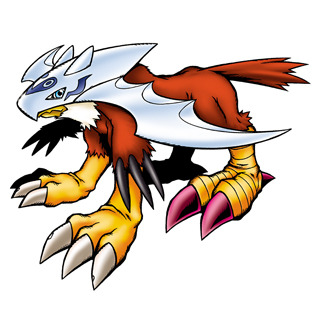

Halsemon by Dani2540
The Crystal Empire draws heavy inspiration inspiration from Greece, which has an very interesting naming convention for the different types of love:
Philia is friendship, in which a person tries to make life better for close associates, and subsequently improving themselves as a person. This is the premise of the whole show, so not much to go over. So is that obviously Twilight's domain? I would say no. The line between a [i]platonic[/i] and [i]romantic[/i] relationship is that with the latter, it can evolve from Ludus and Eros. But not exclusively. So Shining and Cadence could represent Philia-Ludus and Philia-Eros.
"Eros" is infatuation, and the Greeks could often portray it as dangerous, but still very real and healthy. Cadence could maybe represent this, but of course, it's also associated with subject material not quite appropriate for a kids show. Ludus is playful flirtation and young infatuation. But that stage of love isn't what Canterlot Wedding was meant to be touching on. When most people think of a 'love story,' they think of the two leads on their own, then meeting for the first time. But like Twilight, the audience is thrown into their story when they can already make things work, and like Twilight, we have to deal with it. Although the excellent IDW arc featured Cadence and Shining's first date, and it's classic Ludus. Done much better than with Twilight and Flash or Timber.
Maybe Eros could be represented as a Mania corruption by Chrysalis, who is initially presented as a foil to her. Chrysalis doesn't lust for any person, but sees love as a mindless devotion to exploit. It could be said she has a boundless lust for power though. Or perhaps “Pragma,” which nowadays seen as a societal relic when marriages were seen perfectly acceptable vehicles strictly for money and governing.
"Storge" is depicted in raising Flurry, but it could also be counted in how Celestia and Luna view all their little ponies in Equestria. But with how the Two Sisters nurture an entire society, looking at the long-term and big picture way more often, they could also connect to Agape, our basic respect and dignity towards complete strangers. If we had to assign one to each, Celestia would be Storge, and Luna Agape. While Celestia is mainly defined through the relation with her apprentices, Luna's conflicts have more to do with public relations (usually based on damage she feels responsible for). Luna is also noteworthy because although she always liked Twilight, back in "Crystal Empire," she questioned the soundness of staking so many lives on Celestia's favorite graduate. So again, that's her focus on the lives of the many.
Also of note is Philautia, self love. I'd say that the gold standard for this in cartoons is Steven Universe, culminating in "Battle of Heart and Mind" where Steven's Id and Superego literally need to hug each other to save the day. Legend of Korra has this theme running throughout, but the PTSD storyline of Book 4 is of it’s greatest renown. Lessons on Philautia come in a lot of shapes and forms through the Mane 6, but I don't think any of the existing Princesses can effectively be assigned to that branch of love. Twilight has moments of intense self doubt for a lot of the finales, but a lot of times that just rounds back to relying on others as a lens for herself, or a motivation to press forward (this is hardly a bad lesson though). When I think of other Princess(-esque) characters with pivotal moments of learning self love, I think of Luna, Sunset, and Starlight. But with those three, their arcs feel more like lessons in forgiving oneself for having done sincerely monstrous things. For pony characters going through great Philautia arcs of varying stages, I recommend everyone check out the Pandoraverse next-gen storyline by @lopoddityart. Of course, I recommend her work at the drop of a hat, for her excellent illustrations, writing, and journals. This entire post started as a response to one of her Patreon posts.
I suppose if we wanted to count Discord, he'd be the aspect of Ludus, with him treating everything like a performance or game, and his interactions can be a pretty catty.
But enough of me dreaming up a pony god love pantheon. Back to Cadence's involvement, even though her introduction was jarring, I really liked how we had a new pair of Royal Sisters(in-law) with a theme of complementing values. A shame Cadence got shoved aside. I could accept that this show was GOING to be focused on Twilight and Ponyville. That Hasbro wouldn't order new episodes to suddenly shift to the married couple. But although I never thought the show writers RESENTED Cadence, they found a reason pretty quick to keep her segregated from the rest of the story. Lauren Faust has stated that Cadence was created on request for Season 2, and wouldn't have been an Alicorn if the final decision came down to her. The show would make use of her in the role of being a big sister for Twilight, which was wholesome, but in terms of affecting world events, major storylines, or politics? Minimal, even by the light standards of this show. By the finale when we see Twilight ruling the entire country, we couldn't be bothered to even glimpse Cadence.
At least the Crystal Empire got a bone, with a stain glass mirror showing that Flurry turned out pretty rad and takes care of them. I think Cadence was viewed (not correctly) as a concept that threw off the broad character path that Lauren Faust set up, and that the showstaff wanted to reach at the conclusion. Even with the positive role she ended played for Twilight anyway. Twilight got a female role model that wasn't just the motherly authority figure Celestia. (While writing all this, it's made me realize how dang rare it is for any media, for kids or adults, to ever portray that much of a positive relationship between in-laws. Even when someone does, it's mostly guys.) But honestly, besides the wonderful symmetry of a new Diarchy, I would have wanted Cadence and Twilight to ascend to de-facto rulers just because it seems unfair for Twilight to get SO MUCH work.

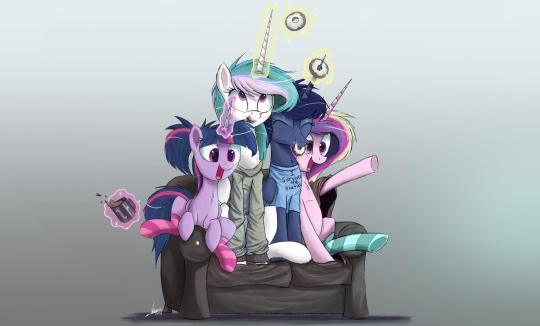
The Third Alicorn, Donut Days, and The Premiere! by NCMares @ncmares @ask-majesty-incarnate

Princess Cadence sonic love boom by Dormin-Kanna
#my litte pony friendship is magic#princess cadence#mi amore cadenza#alicorn#magic of friendship#magic of love#lopoddity#halsemon#NCMares
9 notes
·
View notes
Photo
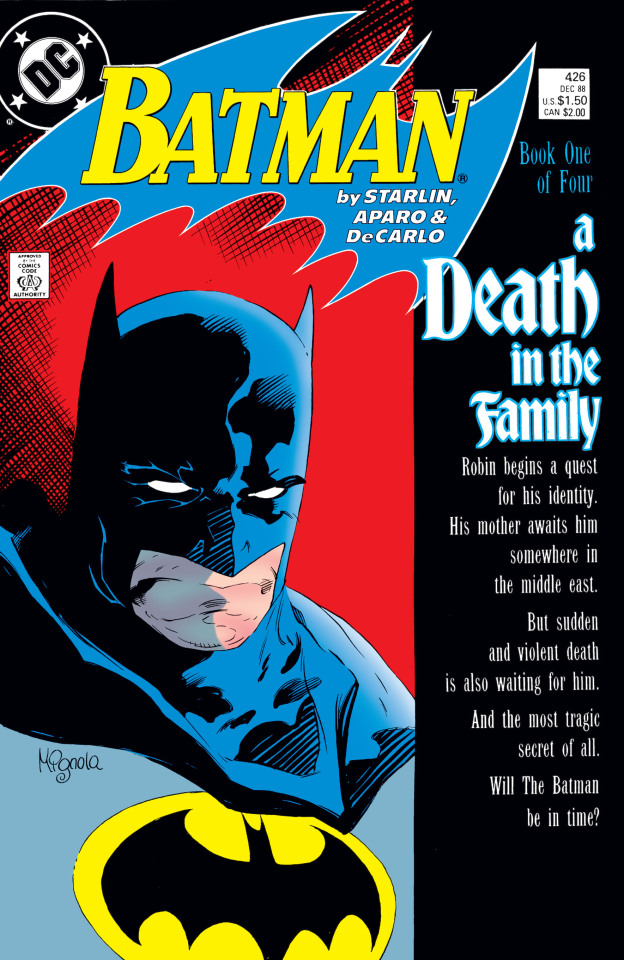

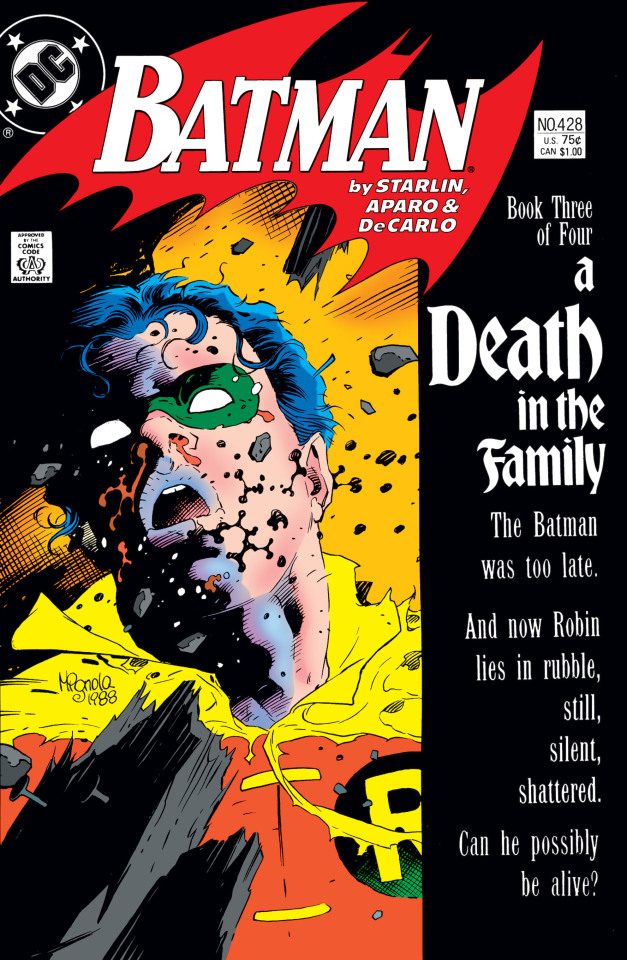
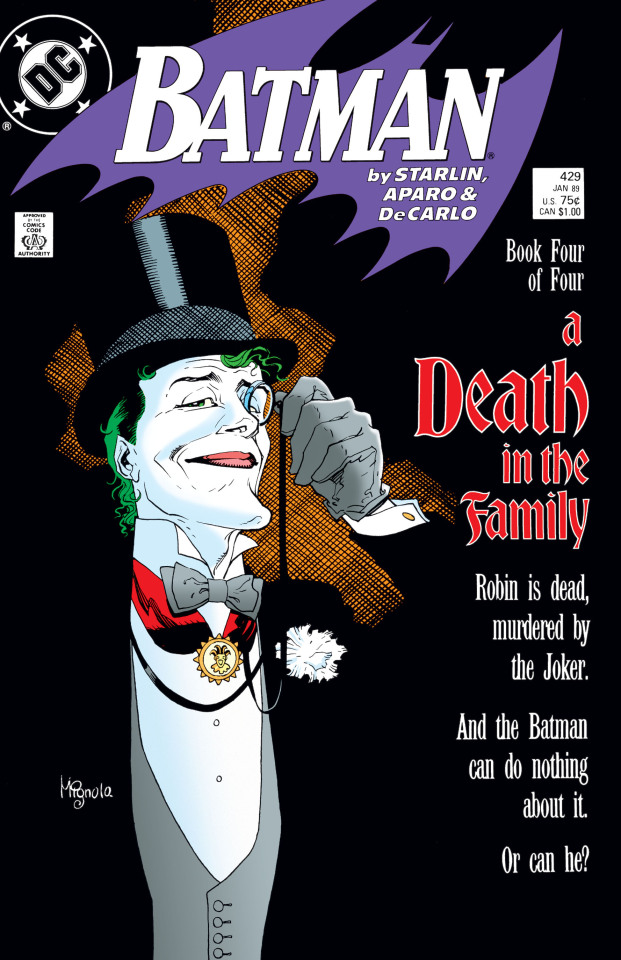
BATMAN: A DEATH IN THE FAMILY BATMAN #426-429 DECEMBER 1988 - JANUARY 1989 BY JIM STARLIN, JIM APARO, MIKE DECARLO, ADRIENNE ROY, MIKE MIGNOLA, ANTHONY TOLLIN AND OVER 10,000 PHONE CALLS.

Jason Todd finds out his biological mother may still be alive and he discovers there are three possible women that could be his mother. He then decides to meet each other to find out which one is the one. But at the same time, the Joker escapes Arkham and decides to make some quick money by dealing with terrorists. Both missions will collide into each other and change Batman’s life forever.

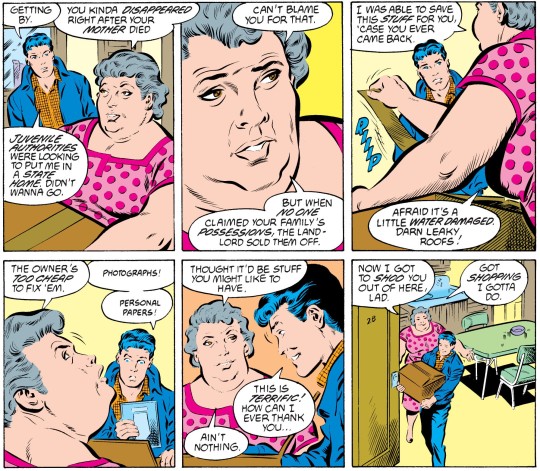
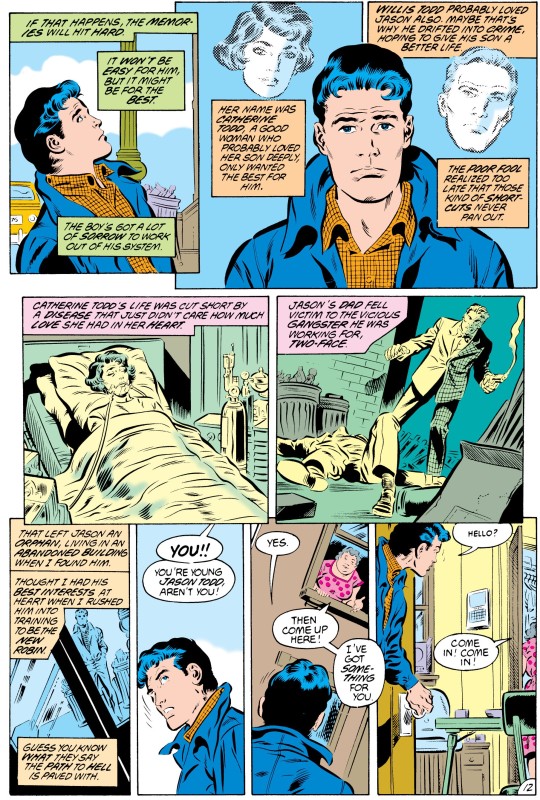
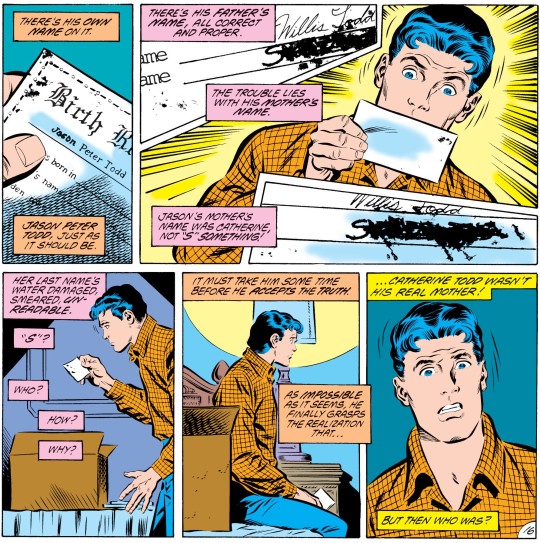

SCORE: 8
This story was a big deal when it came out, and for Batman fans, it still is. But it has been cheapened by DC’s decision to bring the character back from the dead. I assume this is not spoiler, as it is in the covers.
I will talk more about the plot in the spoiler section. I feel like in general there is a lot of lazy writing in this story. I think the idea was good, but there are many things in the story that didn’t need to be this way. I would have just removed everything about the middle east, and I would also tried to find an alternative to yet another “diplomatic immunity” plot.
Jim Aparo did his usual iconic style here, but that also means that many characters look too much alike, which is a shame. Especially when Jason doesn’t really look like a teenager.
So, something I can discuss outside of the spoiler section, is the whole gimmick of this story. The phone number vote.
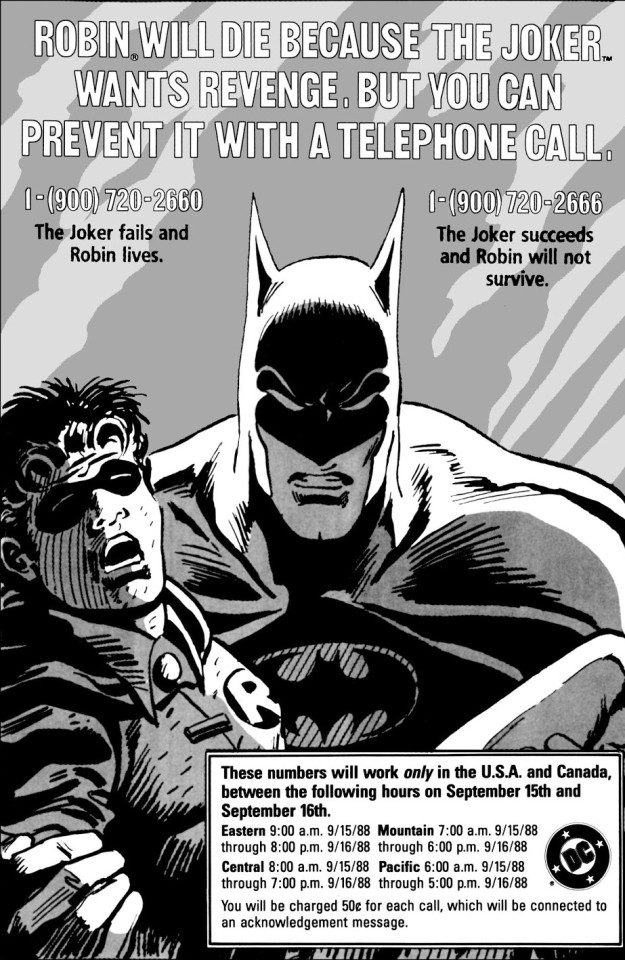
From Wikipedia:
Jason Todd, the second character to take the Robin persona, was introduced in Batman #357 (March 1983). He was initially depicted with a personality and origin identical to that of predecessor Dick Grayson. However, the history-altering events of Crisis on Infinite Earths and Batman: Year One allowed editor Dennis O'Neil, writer Max Allan Collins, and artist Chris Warner to revise his backstory and personality. The changes caused Todd to grow increasingly unpopular with fans during this period; unlike the cheery and optimistic Grayson, this new characterization of Todd was depicted as foul-mouthed, impulsive, and bad-tempered.
Aware of Todd's unpopularity, O'Neil and writer Jim Starlin began discussing ways to retire the character, and before long, began to consider killing him altogether. During an editorial retreat, O'Neil recalled the success of a 1982 segment of Saturday Night Live, in which Eddie Murphy encouraged viewers to call the show if they wanted him to boil Larry the Lobster on air. O'Neil proposed a similar idea involving Todd to publisher Jenette Kahn, who liked the idea. O'Neil would later state:
We didn't want to waste it on anything minor. Whether Firestorm's boots should be red or yellow ... This had to be important. Life or death stuff.
— Dennis O'Neil
On the back of Batman #427, an advertisement was run featuring Batman carrying a severely wounded Robin. In the ad, readers were warned that Robin would die of his injuries "because the Joker wants revenge", but that they could "prevent it with a telephone call". Two 900 numbers were given: one (1-(900) 720-2660) which would let Robin live, and another (1-(900) 720-2666) which would cause him to die. The numbers were active for 36 hours, beginning on September 15, 1988, at 8 A.M. EST and ending on September 16, 1988, at 8 P.M. EST. Readers were charged 50 cents per call. Approximately 10,614 votes were cast during this period. When tallied, the final results were extremely narrow, with 5,343 votes in favor of Jason's death over 5,271 for his survival—a margin of just 72 votes. O'Neil would later admit to having voted in Todd's favor, as he felt that Batman was incomplete without Robin and feared killing Todd would lead to backlash.
"A Death in the Family" was written by Starlin. The artwork was illustrated by Jim Aparo, inked by Mike DeCarlo, and colored by Adrienne Roy. John Costanza handled the lettering, and Mike Mignola designed each issue's cover. The four-part story line began in Batman #426 (December 1988), and concluded in Batman #429 (January 1989). Two versions of issue #428 were prepared: one that would be used if readers voted in favor of Todd's survival, and another to be used if he was to be killed; the latter version ended up being used. The story line was later collected in trade paperback and hardcover form as Batman: A Death in the Family after its conclusion.
When it was first released, "A Death in the Family" generated massive media coverage and backlash over the decision to kill Robin, a beloved comic book character and pop icon. Newspapers such as USA Today and Reuters published articles about it, the latter of which would state that "a group of comic book artists and writers has succeeded in doing what the most fiendish minds of the century... have failed to accomplish". Frank Miller, author of The Dark Knight Returns (1986), was highly critical of the story, describing the "toll-free" number voting as "the most cynical thing [DC] has ever done". O'Neil and his team were caught off-guard by the amount of attention the story drew; according to him, it lasted four straight days, and was unlike anything the team had previously experienced. The story line was a bestseller in both the standard single-issue and trade paperback format.
In retrospect, Hilary Goldstein of IGN called "A Death in the Family" one of the best Batman graphic novels ever written. He described the story as "worth the price of admission", and considered letting readers vote on Todd's fate to be one of DC's strongest decisions. Both Goldstein and NPR contributor Glen Weldon agreed with the choice of killing Todd, as both felt the character was poorly developed and inferior to Grayson. Screen Rant praised Aparo's cover for the collected version, describing it as "iconic" and perfect for showing such a grim, sad moment.

From DC in the 80s:
For Batman, we did Death in the Family -- which was their best-selling book that year -- but it turns out they had all these licensing (pajamas, lunch boxes, and stuff like that) and the licensing department was very mad, everybody got mad, and they needed somebody to blame -- so I got blamed. And within 3 months all of my work dried up - Jim Starlin
Spoilers after the break...
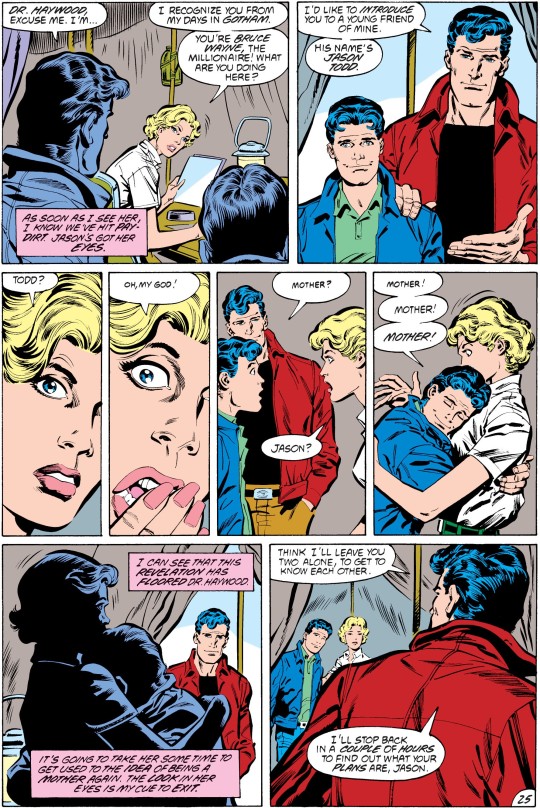
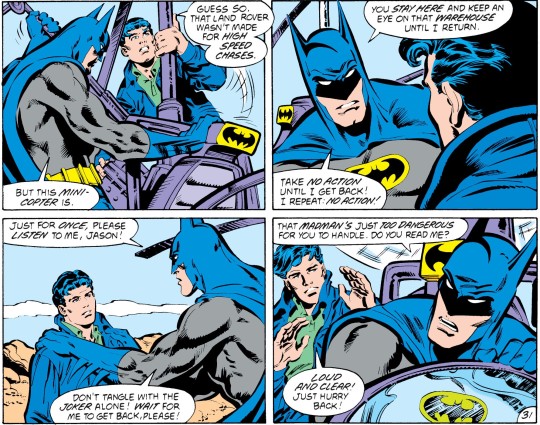
So one of the reason I say there was too much lazy writing in this story, has to do with all the coincidences. The Joker just happens to be in the same places as two of the possible mothers. And not only that, Joker even knew Sheila when she lost her license for doing abortions. I understand why Sheila betrays Jason (she was also taking money from the poor in Ethiopia and didn’t want any problems with the law), but it was never explained how the Joker and Sheila knew each other.
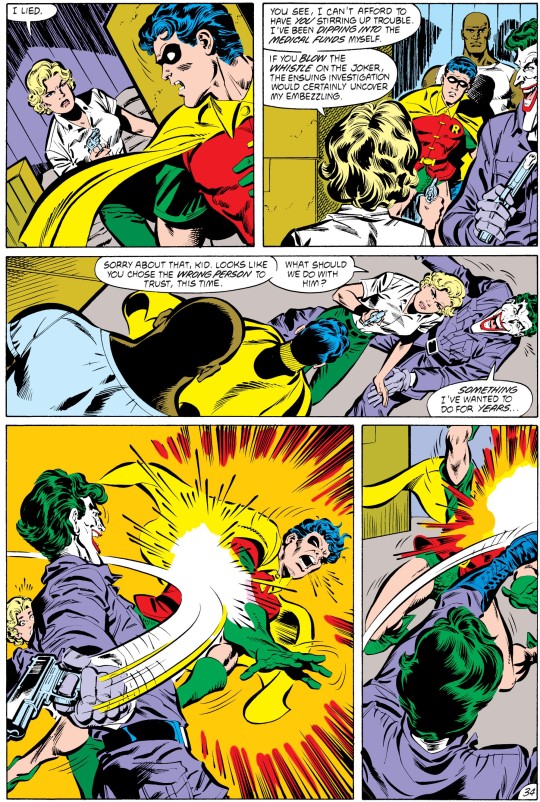
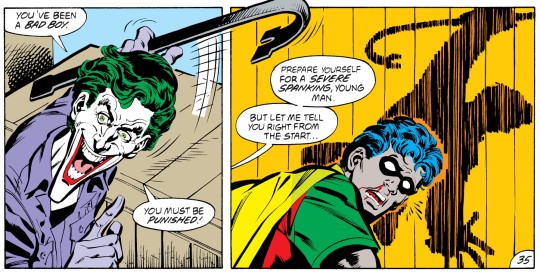
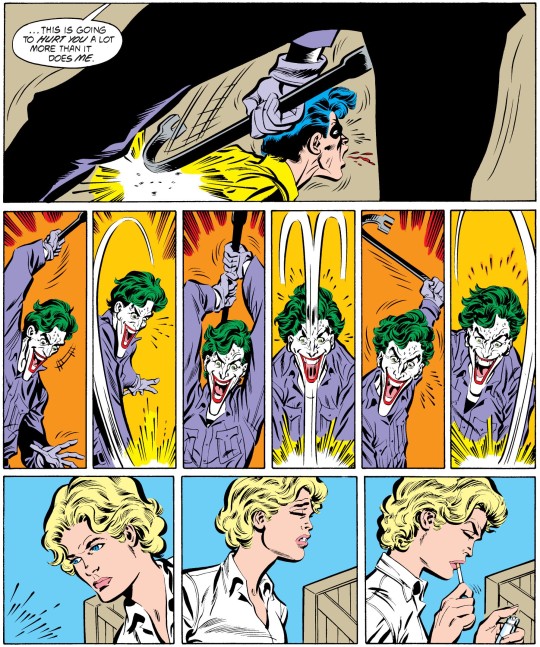
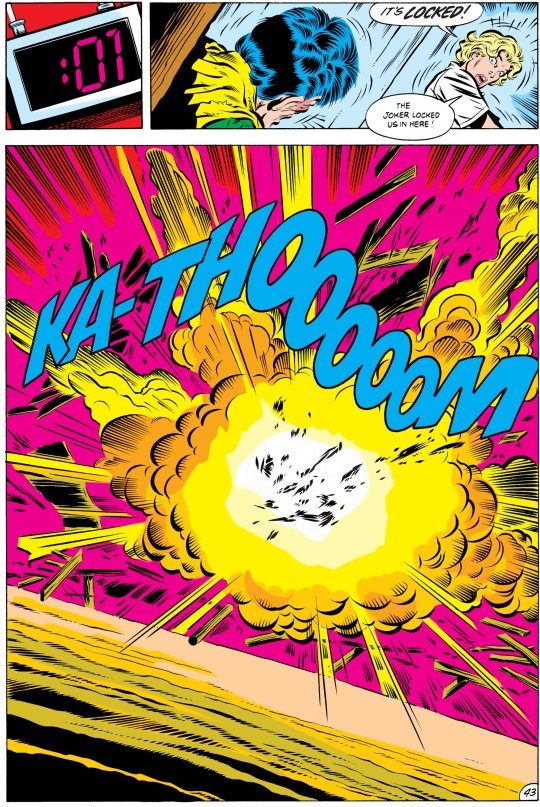
There goes mother of the year!
To be honest, while Jason’s death was brutal, I always felt it was the right thing. Being Robin was child endangerment, Starlin was right in that. But it also seems like Jason magically became Robin, without much thought to it. I tolerate the pre-crisis version more than this one, but the people to blame for how he ended up being... are Max Allan Collins and Jim Starlin.
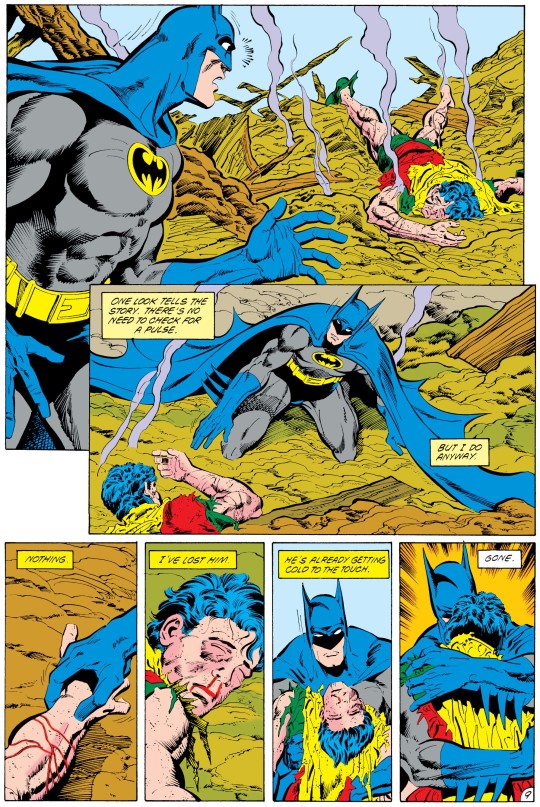

There were two versions of issue #428, and the material ended up being used for Batman Annual #25 (Infinite Crisis tie-in... more lazy writing, by the way).
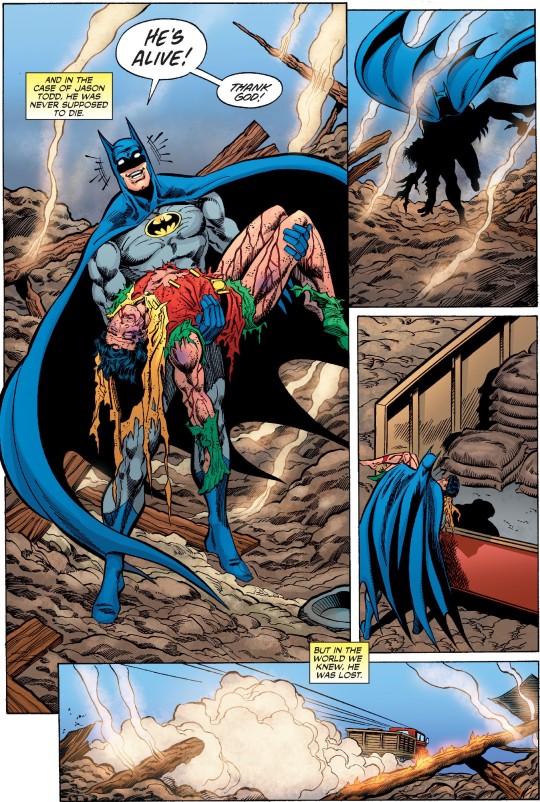
But to me the idea of using diplomatic immunity once again was ridiculous, and just the idea that the Joker would become ambassador and kill everyone in the council... while representing Iran... is also quite stupid, because it would be considered an act of war on all other countries.
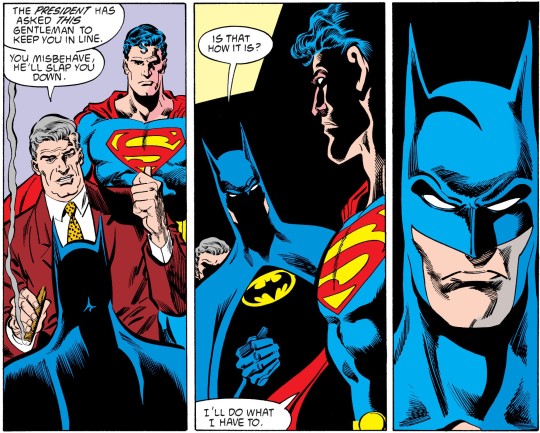
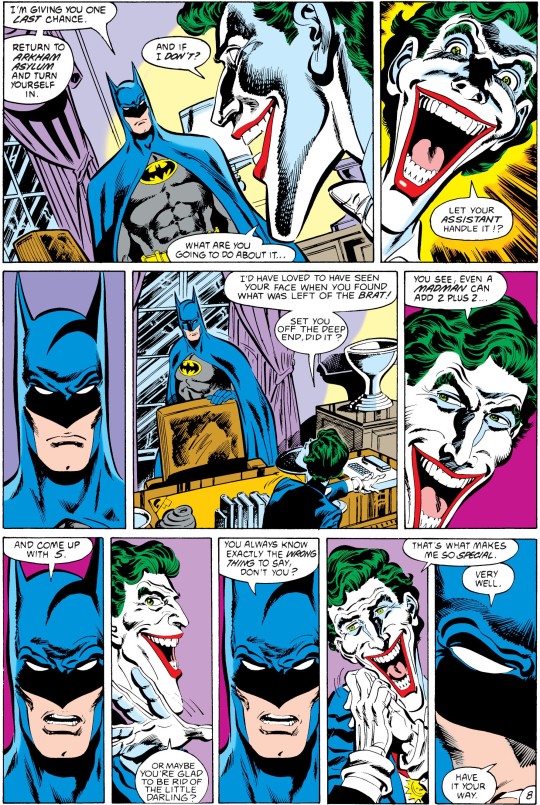
There is also another idea happening in the last issue. That the Joker knows who Batman is. This would make sense as it was too much of a coincidence that Jason died in that same explosion (Batman even mentions Jason to the Joker). The issue may have been edited to remove all references from the Joker that he knows who Batman is, you can read more about it here.
Both Joker and Robin would drop off the radar for an entire year, a year that was quite important for the Joker, as the Batman Motion Picture created bat-mania around the world. In fact, I am lying, the Robin concept wouldn’t take long to start resurfacing (in just a few months we would have Batman: Year Three). But the consequences of this story were felt for years, until people at DC started basically publishing fan fiction, with reality-punching Superboy prime.
If I had to vote, I would vote for Jason to die. Mostly because I know now, how much potential him dying gave to the batman and robin mythos. Having that dead Robin there is a reminder that what they do is dangerous and has no place for amateurs. I wouldn’t vote for Jason to die again now, as it wouldn’t mean a thing. Like death in comics.
#mike mignola#jason todd#robin#batman#joker#superman#dc comics#comics#review#1988#1989#modern age#a death in the family#jim aparo
13 notes
·
View notes
Text
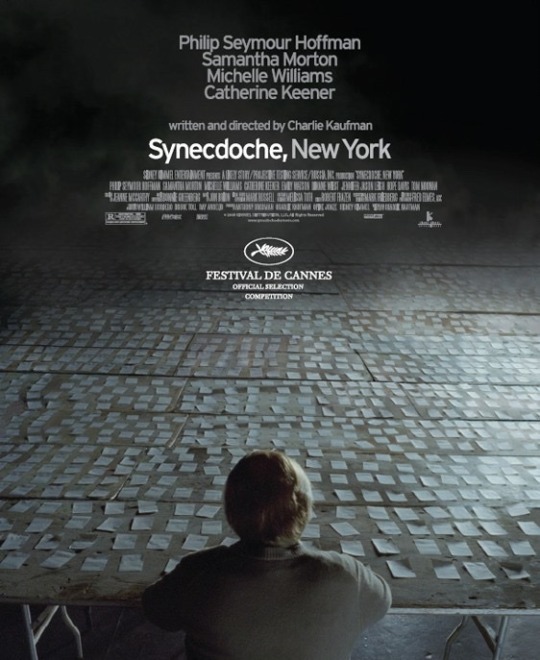
Some thoughts about one of the most important and complex pieces of Cinema created by one of its most brilliant minds, Charlie Kaufman. This piece is called “Synecdoche, New York”, made it to screens in 2008, and it has not been the most famous amongst his other works (eternal sunshine of the spotless mind, Anomalisa, Being John Malkovich, Adaptation), perhaps because it stood on the edge of the forgivable of the provocative. Yet it’s level of courage in the cinematic depiction of humanity’s eternal struggle for depth and meaning is an undoubtedly a rare gem.
This picture follows the life of a theater director (Caden Cotard) and its slow disintegration out from and into itself while going through an endless quest to regain control, in a world that viciously continues to strip the sense from his mind, soul, and body. It quickly starts with a brief introduction into an insane world, one full of disasters, affecting many layers, the outside world, his small family, and his own body. Calamities are everywhere, artists dying before their time, earthquakes killing tens of thousands, political destruction of a fragile society while being eaten by the unmerciful capitalism of America. This is the outside, the surrounding, the baseline of life. This eternal unfair chaos projects itself into his smaller world, his family’s. His wife is slipping away in a self-struggle to maintain the façade of love that she had for him, feeling the shattering disappointment that she describes as an inevitability after “you get to know someone really well”. She is an aspiring artist that longs for freedom from the attachments of her world, the boundaries of modern America, the walls of her house, and the ever-known human “family” structure. They have a daughter; she is erratic and spontaneous. She also has the same bug of deconstruction of the self, as her parent’s, portrayed from the very first scenes when she got obsessively worried of having a “green Poo” which was unusual and unnatural and served as a starting point of constant doubt of her own body and how it functions, thoughts that her parent’s quickly dismissed and ignored. The last layer of this mania is Cotard’s body; it starts showing several symptoms of an unknown undiagnosed illness that seems to be deadly; its symptoms are physical and apparent on his skin and in his joints and in his nerves and his blood in a medically random and incomprehensible fashion. This chaotic manifestation of these lives is aided by fast and unusual style of editing that denies the viewer the chance to breath, constantly challenging any efforts to grasp the story and its characters. This style introduces the surreal and forces you to succumb to its sheer force of the non-logical and the insane; it’s simply saying “I won’t let you understand, as these characters are lost, as these lives are denied of meaning, you will be too”.
The family is destroyed, the mother and the daughter leave, and our poor Cotard is left alone. His body continues to fail in a very gruesome manner. Then we get deeper into a dissection of society; now the medicine trying to understand this disintegration of his body but fails miserably, both because of the dysfunctional medical system (one of apathetic approach that makes an endless loop of referrals that robes time and efforts mercilessly and towards nothing!, in a surreal criticism of modern America’s healthcare system) and the enigma of his body being a projection of the enigma of his soul.
Throughout Cotard’s moral and physical battles, he fails to seize many opportunities of true passion and love. There is a secretary that finds him physically appealing; She admires his talent in theater and finds his tormented soul soothing to hers. She is wild and alive, frequently flirting with him, seducing him into surrendering his meaningless devotion to his miserably failing marriage. He is lonely, she knows that, she understands that, and she also suffers from that and wants to save herself and him, but the idiot is weak, lacks the power for adventure, and powerless to break free from his loneliness. The years pass by in a weird chronology that shines more light on the psychotic state that drowned him, and he continues to have a passive-aggressive vain dance with his admirer around their lust for passion and true happiness, but not actually reaching any. He continuously tries to connect with his abandoning family, failing every time, and each time he would lose more of himself by their constant ignorance and rejection, which later throughout the movie appeared to have changed him into a masochistic pathologic small man, one who got addicted to the worthless and the contemptible.
Despite all his defeats, he is truly a brilliant artist, and a play of his achieves major success quickly to be rewarded with the highest grant that can be given to a theater director. He now has a tool to construct something meaningful and true in his life; he has a mean to maybe gain back some control of his life. He starts building this vague play; he keeps repeating that he wants to portray something real, defining this “real” mainly by the idea of death, his firm belief of its inevitability, but at the same time, his refusal to concede to it as he wants to live and explore the spectrum of his moral paradoxes. This play doesn’t have a plot nor any well-defined characters, no unified structure, no script, and no clear dramatic objectives. He instructs his actors (or rather preaches them) about its intended qualities, but in reality -as had he intimately shared with another admiring actress- he doesn’t really know what he is doing. He starts the project in a spontaneous fashion, instructing actors to build the real, and with the lack of context, he unknowingly starts to shed parts of himself into the play. Step by step, throughout a bizarre and terrifyingly brutal and swift passage of time, he builds his own life in a colossal warehouse that replicates the same chaotic outside world (New York is used as an example, which is a perfect smaller scale of the American society in particular and the whole world in general) and the one of his own life. He chooses actors to play his friends, his co-workers, his lover, his estranged wife (the character being a piece of paper constantly instructing him to clean her house, with random phrases of “congratulations” and empty longings, that served as bread crumbs luring him into an addiction to masochism), and finally, an actor to play his own self.
These versions of the people and the environment of his life keep emerging, getting larger and larger with increasing complexity with more actors, more construction in the set, and more stories. He failed to control his own life, so he went into a quest of replicating his own world but now from the seat of the director in an attempt to assume the “god” of his life, he is searching for control, for meaning, for the lost opportunities of his youth, and the missed love from his existence. He wants to right his mistakes and re-live the failed opportunities. His theater piece -as his own devastation- became endless. He created one duplicated layer that quickly was duplicated again and again and again into further warehouses inside warehouses; actors instructing actors; himself instructing himself to choose another self, and such insanity. But now something fascinating started to appear before his own eyes, his subjects started to break free from the sorrowful storylines of his life. The opportunities of love that he had lost in his past started to be seized by the actors playing them, the stability of his replicated families had stronger chances, even an old failed suicide attempt was successful in a dramatic and hauntingly beautiful fashion (as how one's death is always wished to be). Not only that, but the actors assuming the roles of his old lost loved ones started to have real interactions with the real people of his real life; substituting him; bypassing him, they were not only defying his orders but also furthering his moral decline. The manifesto of god was being undermined, again and again, striking him many times back again to the loss of control and to the void that he so desperately was trying to escape.
This play takes decades in the making, clearly without any comprehensible finishing end in sight. Our director kept making different titles for it as he gets older -and perhaps wiser-. As these smaller versions of life continued to evolve, they started to disintegrate by falling into war and destruction, something that can be described as an embedded doom in the humanity’s genome, their tormented souls everlastingly jumping between the need for control and the need to destroy it. Kaufman is saying that after all, these enchanting dynamics are what keeps us alive, they might be lures of desire, qualities that are old and beasty, but they are the flams of our souls; ones of which are both created and destroyed by fire. This war continues to annihilate everyone and everything, leaving the director utterly alone. His last surrender was to a voice -a manifestation of his superego- explaining to him the deeper meanings of his life, informing him that all humans are alone, he is all the characters of his life, all the characters of his plays, “everyone is everyone, everything is everything”. He continues to wander in the apocalypse until he sits with one survivor actress, one whom played the mother of a dream of his, apologizing to her for the lost opportunity of an old promised picnic with her and her grandchildren he made in an old childhood dream, admitting love for her, which serves as an epiphany for what he believed to be the most complete and the purest of titles for his play, but as he started to name it, he was quickly abducted by death.
Synecdoche New York is a very complex and enchanting piece of art, one that is very hard to dissect. It must be viewed from two distinct perspectives. One that might try to look closely to understand the story, but not to be taken too seriously because it's incomprehensible and surreal, but rather to feel (and maybe understand) how the movie deals with identity, sexuality, and desires; the story of the origin of god and the instincts behind that; the glimpse at American capitalism and its resulting destruction of the passionate and the genuine. Also, the dissection of fatherhood, motherhood, and family; the criticism of toxic masculinity that Kaufman so very much adores dealing with in all his pictures. The other perspective, and the most approachable and important, is to see the bigger picture that integrates all these small aspects and its dazzling complexities; To see the laughable mockery of our grasp on life, our infinite quests for meaning in the wrong paths that imprison us into sorrow and loneliness that furthers and furthers, while we miss the most beautiful and what is truly worthy of life; sex, passion, courage, art, love, and the intimate human touch.
Kaufman’s Synecdoche New York is an unforgettable experience that almost redefines everything, one that is very personal to me, and will forever stay in my memory as well as my heart.
#kaufman#charlie kaufman#synechdoche new york#synecdoche#new york#movies#movie review#movie#review#cinema#top#top 10#love#intimacy#philip seymour hoffman
11 notes
·
View notes
Text
Day 16 of 30 Days of Apollon
How do you think this deity represents the values of their pantheon and cultural origins?
Well, one of the main group of values of Hellenic polytheism is considered by most to be from Apollon, these are called the Delphic Maxims and is where the phrase, ‘Know Thyself’ comes from.
The Delphic maxims are a set of 147 aphorisms inscribed at Delphi. Originally, they were said to have been given by the Greek god Apollo's Oracle at Delphi, Pythia and therefore were attributed to Apollo.[1] The 5th century scholar Stobaeus later attributed them to the Seven Sages of Greece.[2] Contemporary scholars, however, hold that their original authorship is uncertain and that 'most likely they were popular proverbs, which tended later to be attributed to particular sages.'[3] Roman educator Quintilian argued that students should copy those aphorisms often to improve their moral core.[4] Perhaps the most famous of these maxims is 'know thyself,' which was carved into the Temple of Apollo at Delphi. The specific order and wording of each maxim varies among different versions (and translations) of the text.
I believe Apollon (city/society/neighbourhood worship) along with Hestia (household/family/personal worship) had a strong hand in keeping the cultus of (the ancient version of) Hellenic Polytheism alive and along with the other gods made it their job to guide humans. He is considered, ‘The national divinity of the Greeks’, which to me means that when he shows himself he is not just Apollon but all the gods, a representative of the Olympians, in a similar way to how Hermes represents the gods as the messenger. Yet in a modern way, Apollon would be a foreign king/ambassador/politician while Hermes would a foreign correspondent/news reporter/politician.
Considering his cultural origins, he seemed to gain attributes from the gods around him (gods from different parts of Greece) through the years, which explains why he is considered by some a migratory god because it seems like he doesn’t take the place of most of these gods he learns a skill or power from them.
For the Greeks, Apollo was all the Gods in one and through the centuries he acquired different functions which could originate from different gods. In archaic Greece he was the prophet, the oracular god who in older times was connected with "healing". In classical Greece he was the god of light and of music, but in popular religion he had a strong function to keep away evil.[50] Walter Burkert[51] discerned three components in the prehistory of Apollo worship, which he termed "a Dorian-northwest Greek component, a Cretan-Minoan component, and a Syro-Hittite component."
From his eastern origin Apollo brought the art of inspection of "symbols and omina" (σημεῖα καὶ τέρατα : sēmeia kai terata), and of the observation of the omens of the days. The inspiration oracular-cult was probably introduced from Anatolia. The ritualism belonged to Apollo from the beginning. The Greeks created the legalism, the supervision of the orders of the gods, and the demand for moderation and harmony. Apollo became the god of shining youth, ideal beauty, fine arts, philosophy, moderation, spiritual-life, the protector of music, divine law and perceptible order. The improvement of the old Anatolian god, and his elevation to an intellectual sphere, may be considered an achievement of the Greek people.[52]
In my experience and from reading other introductions to Hellenic polytheism, Apollon tends to be the first god you meet/explore from the Hellenic pantheon, which fits with his role as an ambassador who introduces humans to the divinity of the Olympians
So to answer the question I believe that he does represent the values of his pantheon and his cultural origins as he still portrays the attributes he procured in his Dorian:
The connection with the Dorians and their initiation festival apellai is reinforced by the month Apellaios in northwest Greek calendars.[66] The family-festival was dedicated to Apollo (Doric: Ἀπέλλων).[67] Apellaios is the month of these rites, and Apellon is the "megistos kouros" (the great Kouros).[68] However it can explain only the Doric type of the name, which is connected with the Ancient Macedonian word "pella" (Pella), stone. Stones played an important part in the cult of the god, especially in the oracular shrine of Delphi (Omphalos).[69][70]
The "Homeric hymn" represents Apollo as a Northern intruder. His arrival must have occurred during the "Dark Ages" that followed the destruction of the Mycenaean civilization, and his conflict with Gaia (Mother Earth) was represented by the legend of his slaying her daughter the serpent Python.[71]
The earth deity had power over the ghostly world, and it is believed that she was the deity behind the oracle.[72] The older tales mentioned two dragons who were perhaps intentionally conflated. A female dragon named Delphyne (Δελφύνη; cf. δελφύς, "womb"),[73] and a male serpent Typhon (Τυφῶν; from τύφειν, "to smoke"), the adversary of Zeus in the Titanomachy, who the narrators confused with Python.[74][75] Python was the good daemon (ἀγαθὸς δαίμων) of the temple as it appears in Minoan religion,[76] but she was represented as a dragon, as often happens in Northern European folklore as well as in the East.[77]
Apollo and his sister Artemis can bring death with their arrows. The conception that diseases and death come from invisible shots sent by supernatural beings, or magicians is common in Germanic and Norse mythology.[58] In Greek mythology Artemis was the leader (ἡγεμών, "hegemon") of the nymphs, who had similar functions with the Nordic Elves.[78] The "elf-shot" originally indicated disease or death attributed to the elves, but it was later attested denoting stone arrow-heads which were used by witches to harm people, and also for healing rituals.[79]
The Vedic Rudra has some similar functions with Apollo. The terrible god is called "The Archer", and the bow is also an attribute of Shiva.[80] Rudra could bring diseases with his arrows, but he was able to free people of them, and his alternative Shiva is a healer physician god.[81] However the Indo-European component of Apollo does not explain his strong relation with omens, exorcisms, and with the oracular cult.
Minoan:
it seems an oracular cult existed in Delphi from the Mycenaean age.[82] In historical times, the priests of Delphi were called Lab(r)yadai, "the double-axe men", which indicates Minoan origin. The double-axe, labrys, was the holy symbol of the Cretan labyrinth.[83][84] The Homeric hymn adds that Apollo appeared as a dolphin and carried Cretan priests to Delphi, where they evidently transferred their religious practices. Apollo Delphinios or Delphidios was a sea-god especially worshiped in Crete and in the islands.[85] Apollo's sister Artemis, who was the Greek goddess of hunting, is identified with Britomartis (Diktynna), the Minoan "Mistress of the animals". In her earliest depictions she is accompanied by the "Master of the animals", a male god of hunting who had the bow as his attribute. His original name is unknown, but it seems that he was absorbed by the more popular Apollo, who stood by the virgin "Mistress of the Animals", becoming her brother.[78]
The old oracles in Delphi seem to be connected with a local tradition of the priesthood, and there is not clear evidence that a kind of inspiration-prophecy existed in the temple. This led some scholars to the conclusion that Pythia carried on the rituals in a consistent procedure through many centuries, according to the local tradition. In that regard, the mythical seeress Sibyl of Anatolian origin, with her ecstatic art, looks unrelated to the oracle itself.[86] However, the Greek tradition is referring to the existence of vapours and chewing of laurel-leaves, which seem to be confirmed by recent studies.[87]
Plato describes the priestesses of Delphi and Dodona as frenzied women, obsessed by "mania" (μανία, "frenzy"), a Greek word he connected with mantis (μάντις, "prophet").[88] Frenzied women like Sibyls from whose lips the god speaks are recorded in the Near East as Mari in the second millennium BC.[89] Although Crete had contacts with Mari from 2000 BC,[90] there is no evidence that the ecstatic prophetic art existed during the Minoan and Mycenean ages. It is more probable that this art was introduced later from Anatolia and regenerated an existing oracular cult that was local to Delphi and dormant in several areas of Greece.[91]
and Anatolian origins:
A non-Greek origin of Apollo has long been assumed in scholarship.[7] The name of Apollo's mother Leto has Lydian origin, and she was worshipped on the coasts of Asia Minor. The inspiration oracular cult was probably introduced into Greece from Anatolia, which is the origin of Sibyl, and where existed some of the oldest oracular shrines. Omens, symbols, purifications, and exorcisms appear in old Assyro-Babylonian texts, and these rituals were spread into the empire of the Hittites. In a Hittite text is mentioned that the king invited a Babylonian priestess for a certain "purification".[52]
A similar story is mentioned by Plutarch. He writes that the Cretan seer Epimenides purified Athens after the pollution brought by the Alcmeonidae, and that the seer's expertise in sacrifices and reform of funeral practices were of great help to Solon in his reform of the Athenian state.[92] The story indicates that Epimenides was probably heir to the shamanic religions of Asia, and proves, together with the Homeric hymn, that Crete had a resisting religion up to historical times. It seems that these rituals were dormant in Greece, and they were reinforced when the Greeks migrated to Anatolia.
Homer pictures Apollo on the side of the Trojans, fighting against the Achaeans, during the Trojan War. He is pictured as a terrible god, less trusted by the Greeks than other gods. The god seems to be related to Appaliunas, a tutelary god of Wilusa (Troy) in Asia Minor, but the word is not complete.[93] The stones found in front of the gates of Homeric Troy were the symbols of Apollo. A western Anatolian origin may also be bolstered by references to the parallel worship of Artimus (Artemis) and Qλdãns, whose name may be cognate with the Hittite and Doric forms, in surviving Lydian texts.[94] However, recent scholars have cast doubt on the identification of Qλdãns with Apollo.[95]
The Greeks gave to him the name ἀγυιεύς agyieus as the protector god of public places and houses who wards off evil, and his symbol was a tapered stone or column.[96] However, while usually Greek festivals were celebrated at the full moon, all the feasts of Apollo were celebrated at the seventh day of the month, and the emphasis given to that day (sibutu) indicates a Babylonian origin.[97]
The Late Bronze Age (from 1700 to 1200 BCE) Hittite and Hurrian Aplu was a god of plague, invoked during plague years. Here we have an apotropaic situation, where a god originally bringing the plague was invoked to end it. Aplu, meaning the son of, was a title given to the god Nergal, who was linked to the Babylonian god of the sun Shamash.[21] Homer interprets Apollo as a terrible god (δεινὸς θεός) who brings death and disease with his arrows, but who can also heal, possessing a magic art that separates him from the other Greek gods.[98] In Iliad, his priest prays to Apollo Smintheus,[99] the mouse god who retains an older agricultural function as the protector from field rats.[33][100][101] All these functions, including the function of the healer-god Paean, who seems to have Mycenean origin, are fused in the cult of Apollo.
#30 days of Apollon#dodekatheism#hellenic polytheism#hellenismos#hellenic pagan#for the love of apollo#for the love of the dodekatheon#ares is great#Hail King Zeus and Queen Hera#hermes is my god#Hades is great too#Hestia is a sweetheart#30 days of deity devotion#30 days of devotion
7 notes
·
View notes
Text
Call of Cthulhu by HP. Lovecraft
https://www.youtube.com/watch?v=vqIxCqayQok&list=LLA7itL_HoGpsUJLAI_oa0hQ&index=23&t=4577s
I’ve now had repeat listens of this audiobook. To summarize the Call of Cthulhu is presented as a manuscript, narrated by Francis Wayland Thurston of Boston as he recounts the notes left behind by his grand-uncle, George Gammell Angell, a professor of Semitic languages at Brown University in Providence, Rhode Island, who died suddenly in the winter 1926-7.
Part 1: The Horror Clay.
The first part concerns a small bas-relief sculpture found among the manuscript, which the narrator describes “ my somewhat extravagant imagination yielded simultaneous pictures of an octopus, a dragon, and a human caricature […]A pulpy tentacled head surmounted a grotesque and scaly body with rudimentary wings”. The sculpture is the work of Henry Anthony Wilcox, a student of the Rhode Island School of Design who based his work on his dreams of “great cyclopean cities of titan blocks and sky flung monoliths, all dripping with green ooze and sinister with latent horror”. These images are associated in dreams with the words Cthulhu and R’lyeh. Wilcox’s dreams began on March 1, 1925, culminating in a period from March 23 until April 2 when Wilcox was in a state of delirium. During the same period, Angell’s notes revealed that there were similar cases of delirium and group folly or mania around the world - from Paris and London, Africa and South America, Philippines, Western Ireland and India. New York and California.
Part 2: The Tale of Inspector Legrasse.
The second part of the story begins with Angell’s notes revealing that he had heard the word Cthulhu and seen a similar image much earlier. At the 1908 meeting of the American Archaeological Society in St. Louis, Missouri, a New Orleans police officer named John Raymond Legrasse had asked for assistance in identifying a statuette, made of unidentifiable greenish black stone, that hade been captured months before in the wooded swamps south of New Orleans during a raid on a supposed voodoo meeting and held an identical resemblance to the figure depicted in Wilcox’s bas-relief. On November 1, 1907, Legrasse had led a party in search of several women and children who disappeared from a squatter community. The police found the victims oddly marred bodies being used in a ritual the centered around the statuette in a ring of fire with around 100 men - all of a very low, mixed blooded and mentally aberrant type, all chanting the phrase “Ph’nglui mglw’nafh Cthulhu R’lyeh wgah’nagl fhtagn.” After killing five and arresting 47 others, Legrasse interrogated the prisoners and learned “the central idea of their loathsome faith”. The prisoners identified the statuette as “great Cthulhu” and translated the phrase as “In his house at R’lyeh dead Cthulhu waits dreaming.” One of the academics queried by Legrasse, William Channing Webb, a professor of anthropology at Priceton University, points out that he had encountered, “high up on the West Greenland coast” a similar phenomenon on an 1860 expedition: “a singular tribe or cult of degenerates whose religion, a curious form of devil-worship, chilled him with it’s deliberate bloodthirstiness and repulsiveness.” Webb said that the Greenland cult had both the same chant and a similar hideous fetish. Thurston then notes that this point of the investigation, “My attitude was still of absolute materialism, as I wish it still were.”
Part 3: The Madness from the Sea.
The third and final part of the story, Thurston extends the inquiry into the “Cthulhu Cult” beyond what professor Angel discovered. He discovers by chance and article from the Sydney Bulletin, an Australian newspaper, for April 18, 1925, that reported the discovery of a derelict ship in the pacific ocean with only one survivor - Norwegian sailor Gustaf Johansen, second mate on the schooner Emma out of Auckland, New Zealand, which on March 22 encountered a heavily armed yacht, the Alert, crewed by “a queer and evil looking crew of Kanakas and half-castes” from Dunedin, New Zealand. The Alert attacked without provocation and despite the crew of Emma losing their ship, they managed to board the opposing ship and kill all their attackers. The article then went on to say that the survivors encountered an island the next day, even though there are no charted islands in that area. Most of the remaining crew died on the island, but Johansen is said to be “queerly reticent” about there cause of death. Thurston realizes from the article that the crew of the Alert was connected to the Cthulhu Cult, and travels, first to New Zealand, then to Australia (where he sees a statue retrieved from the Alert with a "cuttlefish head, dragon body, scaly wings, and hieroglyphed pedestal") and finally to Oslo, where he learns that Johansen died suddenly after an encounter with "two Lascar sailors". When Johansen's widow gives Thurston a manuscript written in English that her husband left behind, the narrator learns of the crew's discovery of the uncharted island which is described as "a coastline of mingled mud, ooze, and weedy Cyclopean masonry which can be nothing less the tangible substance of earth's supreme terror — the nightmare corpse-city of R'lyeh."Exploring the risen land, which is "abnormal, non-Euclidian, and loathsomely redolent of spheres and dimensions apart from ours," the sailors manage to open a "monstrously carven portal," and from the newly opened depths It lumbered slobberingly into sight and gropingly squeezed Its gelatinous green immensity through the black doorway. The stars were right again, and what an age-old cult had failed to do by design, a band of innocent sailors had done by accident. After vigintillions of years great Cthulhu was loose again, and ravening for delight. Thurston (or Johansen) writes that "The Thing cannot be described," though the story does call it "the green, sticky spawn of the stars," and refers to its "flabby claws" and "awful squid-head with writhing feelers." Hinting at its scale, the story says, "A mountain walked or stumbled" (this is corroborated by Wilcox's dreams, which "touched wildly on a gigantic thing 'miles high' which walked or lumbered about"). Johansen manages to get back to the yacht; when Cthulhu, hesitantly, enters the water to pursue the ship, Johansen turns the Alert around and rams the creature's head, which bursts with "a slushy nastiness as of a cloven sunfish" — only to immediately begin reforming as Johansen and William Briden (insane, and soon dead) make their escape. After reading this manuscript, Thurston ends his own narrative on a pessimistic note: "Loathsomeness waits and dreams in the deep, and decay spreads over the tottering cities of men." He assumes that he will soon meet the fate of Angell and Johansen: "I know too much, and the cult still lives." He also thinks that Cthulhu, whilst restoring his broken head, was dragged down again with the sinking city, thus keeping humanity safe until the next time, when the stars are right.
END.
2 notes
·
View notes
Text
The Disney FROZEN II Teaser Trailer Mania - Part 2
Sorry, but I just can't hold it back ... it just has to get out of me :-)
What we can probably assume so far: 1. It is undoubtedly clear that all of our friends from Arendelle travel together to the far-off destination, because in the penultimate scene of the teaser they are all standing side by side on the hill, all still blithely, in eager anticipation. Anna's look at Elsa may mean that she wonders if they'll all find the answers down there in the valley they're looking for, while Elsa is probably already thinking about the next steps. Kristoff does not look very enthusiastic, rather annoyed and somehow "more ignorant" than the other two.

2. It is also clear that at some point they are all separated from each other and have to extant more or less dangerous adventures, including two attacks. Once with a kind of pink forcefield (it does not look like a fire!) and once through an ambush attack. They may have split theirself to the remaining three directions to get the answers faster. There must be a good reason for this trip. If so, Olaf seems to accompany Elsa, he is already standing next to her on the hill (see also my theory Part 1).
3. The Journey of all of them is most likely to begin in Arendelle, when Anna, still in her normal outfit and with her braids - probably she's the first of all the others and completely surprised - sees the floating crystals scattered around the castle.

Referring to a small but very interesting detail in the YouTube video from my previous post, I now come to my second, expanded theory. Disney probably gave us a hidden clue! Namely Anna's bag or its contents, which we see in the teaser, as she sits desperately in the cave.

So here's my theory and I have to look back some time: It can be assumed that Anna was often enough bored in her youth without Elsa as a playmate and therefore she moved alone through the castle, ultimately perhaps landed even in the (secret?) castle library. Well, you know, where Anna's father, King Agnarr, pulled the book of trolls off the shelf shortly after Anna was struck by Elsa's ice blast. Aside from knowing exactly what he was looking for, it may well be that years later Anna discovered exactly this book, partially translated it (possibly with the help of other books) or remembering the runes inside this book later.
When one evening (or is it in the morning?) these crystals appeared in front of the castle and four of them strangely glimmered, Anna possibly recognized the four different symbols on it. Does Anna remember the book of the trolls at that moment? Is this perhaps even an old prophecy or a mystery of the trolls, that have something to do with Arendelle at the time of her parents and maybe even wherefrom Elsa has her innate powers? Does Anna remember subconsciously that once an old troll robbed her of some of her memories? Maybe even more than that?!

As far as we know Elsa has never told her this fact and maybe in the second part of Frozen we will see when Elsa Anna finally opens up and an honest discussion between the two takes place.
I mean, that with her father and the trolls is very strange, isn't it? From where does King Agnarr know about the trolls? At least he knows immediately which book he has to look for. How does he know about the truth about Elsa's powers and that one cannot only be born with it but also - according to the old troll - could be cursed with it? Let us recall an illustration in this book, an "injured knight laid on a stone slab" (?). Is this also about the ancestors of the royal family? Does it know Agnarr therefore, only from old books? Queen Iduna is also not very surprised during her visit to the trolls, or she is too absorbed in her own thoughts about care for her daughter.

What did Disney hide from us for six years long, after Frozen? Why does Disney at first make cryptic hints in the form of a book, inscribed with Nordic runes, which is obviously about the healing of a person who was carried off by a power that can only be undone by trolls that turned to stone and much much more...many secrets. And then there is nothing anymore? Not even an outcoupling as story in one of the countless Disney Frozen books? There's more behind it, in my opinion.
Lately, I wonder how long Disney has actually been working on a possible sequel to Frozen in secret, or at least seriously playing with that thought. A sequel that clarifies issues as important as Elsa's origin of her powers, or what trolls and their abilities are all about. Disney hasn't overseen what the fans thought and what they wanted further to know, that's for sure. The fact that the fans were thinking in a very different direction with #giveelsaagirlfriend, has surely surprised Disney a bit. However, clarifying the characters' past and parentage is more than worthy of being told in a sequel... it's also fitting to that Frozen II feels much more "epic"!
Therefore I additionally would like to get rid of the following: Trolls who not only can resurrect themselves from their state of being stones, but also have an "Elder" among them who has the ability to look to the future - except for his healing and telepathy abilities at Anna and Elsa. Even the "smallest" of them seem to be able to create brightly colored crystals (note: troll wedding scene with Anna and Kristoff, to that I'll come to later, and Frozen - Northern Lights).
Who knows ... maybe the trolls are not as nice and friendly as we thought so far and they have taken Kristoff under himself just to keep him away from sharing their big secret with other people, maybe they even manipulated him. After all, Kristoff has secretly observed the meeting of the royal family with the trolls, and perhaps this - apart from the sovereigns of Arendelle - may not be found out by anyone in the human world! Bulda said to Kristoff and Sven when they were discovered by her: "I'll keep you, cuties ...!". Is Bulda in fact perhaps a guardian of the trolls, because she was the only one who did not change herself from stone to troll and kept far outside the meeting? What about Oaken? Next to the door of his shop are two figures of trolls, does he know the secret, or is this just decoration, the depiction of a myth?
When I think about it, I suddenly can bring in something else in this context: Elsa's gloves, which she got from her dad, supress her powers to the outside, but not her shoes (the scene when Elsa ran across the fjord and let froze it)! Did Agnarr get these gloves from the trolls and does the gloves have a kind of magic in it that deprives Elsa of her feelings? "Do not feel, conceal" ... such a significant sentence that Elsa's father said to her!

Elsa has a whole chest full of these gloves in the attic of the castle (Olaf's Frozen Adventure), which would last for a lifetime.

Why? Well, because they are nowhere to buy! Nobody can tell me that a woman does not follow fashion, not even Elsa, and wears the same gloves all her life, if they were not treated in any magical way. And Elsa has their powers reasonably under control later (maybe therefore the storage below the rooftop?)

The special chains in the castles dungeon, with that Elsa was detained could not be forged overnight on behalf of Prince Hans, therefore they must have been prepared already years before by KIng Agnarr. Only he and Iduna knew about Elsa's abilities. Was that at that moment, Elsa began to suspect where these special handcuffs had come from?
Questions, questions and more questions... I would really appreciate it if the puzzle would transform to a whole picture soon!
39 notes
·
View notes
Text
I’ve been thinking about writing this all down for a while now. The end of S6 was so exhausting. I’m not real big with the sharing of personal feelings or emotions, but I have come a long way with it. Even so, people that know me would be shocked if they knew I was putting all of this out there for other people to judge. Deep down we are very insecure. However, I felt like I needed to put it out there in case someone shared this same type of devotion to the show for the way they handled bipolar Carrie over the years and now feel lost after all the shit that transpired in the last two seasons. I’ll put this out there knowing it is really just for me, but if someone is in despair and googles the right words, maybe they’ll find it. Plus, it is way easier for me to share with strangers and if they feel as much anguish about this show as I do, we could probably become the best of friends. :)
When I first heard that this show was in production, I was intrigued. I was given the bipolar diagnosis in my teens. I was anxious to see how they would portray a bipolar CIA agent. I’ve always felt connected to Carrie as a character for obvious reasons. I’ve defended her character over the years based on my own battles with emotional instability. I know some people thought it was unrealistic that Saul could be so close to her and not know, but it *is* possible. Many people that are bipolar could earn their own Emmy, me included. We can flip a switch and give quite the performance. I work with people who have no idea. As long as my medication is working effectively, I can keep my mood even enough to disguise any internal conflicts. I don’t have as many manic episodes anymore. Now I suffer more with all of the lows. Unfortunately, my norm is Eeyore and the lows go really low. But the mania is still there, and I still struggle daily.
I think they’ve done an excellent job incorporating (more than once) the detachment that tends to come pretty easily. There have been several times where significant time has passed without Carrie speaking to Saul. He calls. She doesn’t respond. I’ve been told before that it is like I’m on a moving train in one car and I simply unhook my train car from the rest of the train as I’m waving goodbye. Not exactly a compliment or a good quality to possess, but in retrospect, also not exactly unfounded. It is too easy for me to not look back. It is subtleties like this throughout the show that have made Carrie very relatable to me. I think the main thread that ties every aspect of her life together that is so relatable to so many bipolar people is the obsessive, addictive personality traits. Whether it is an unwavering focus on completing the “mission” or the crazy type of obsessive love for Brody, I get it all. Those are things I’ve had to control in my own life. She finally let this obsession turn the table, and she gave in. When she asked Brody why it hurt so much at the end of S2, he had that line about her giving it up to him completely. It was a perfect line. It almost destroyed her, because that’s what happens to us if we do “give it up.”
This addictive personality trait is pretty much at the core of all of her missteps when you look at the bigger picture. She wound up off her meds and in the hospital (fantastic, realistic depiction, btw) because of an obsession with Brody. After she was out, she couldn’t control her anger and blew an operation. However, the fact that she felt this rage at the surface and yet there was still this obsessive love underneath was so spot on. People who don’t suffer this way can’t comprehend an intelligent, independent woman seeking this sort of crazy need to be loved by this person. Carrie is determined and assertive. Claire Danes does a fantastic job showcasing those qualities in Carrie, all the while doing justice to this dynamic, vulnerable, and unstable side of her personality. Quinn told her that he’d want to rip Brody’s skin off if he were her, which would be the most normal response. But we aren’t “normal.” It takes years of therapy to try to trick yourself into a more appropriate response…believe me, I know. Carrie had many more responses like this that most people would think were inappropriate. Saul told Carrie that Quinn went to him with concerns after Sandy was pulled from the car. Carrie’s defensive response was that Quinn was the one upset by it, and Saul pointed out that would be the more appropriate reaction. This is one of the many reasons why I loved this show. They wrote stuff like this in that I feel is truly fundamental when portraying someone that is bipolar. When you are in this particular state, societal norms are not something you comprehend. Your reactions can come across as callous and devoid of any real emotion. I am still amazed at how accurate it was through the first four plus seasons.
When they first introduced Quinn into the story, it became clear to me that they were trying to find someone to fit into the role of a monitor. I knew he was going to be *that* person when he went to see Carrie in the hospital and told Saul he wasn’t okay with what they were doing to her. I happen to think it is a must to have someone like this in your corner if you want to fight the battle with this disease. There aren’t a lot of people who can take on that role and stick with it long-term. We can be incredibly hurtful and completely self-involved. But this is the shit we do when out of control…reckless abandon with no acceptance that there will be consequences in the end. That was basically S4 for Carrie.
It was hard for me to accept they were making Quinn that person, because I adored Quinn for totally separate reasons. I know the reality of what can happen to those relationships in the long run, so I actually felt sad for Quinn when I saw how deeply he cared for her. I know that sounds totally fucked up, but it typically doesn’t end well for someone with a heart of gold that tries to love you unless they’ve actually done their own research on how to love someone that is bipolar. It is actually a thing, trust me. They even have therapy groups for families and spouses, just like they do for someone who loves and cares for an alcoholic. Here Quinn is with this compassion and love, all the while fighting his own demons. Quinn isn’t a bad guy, even though he wrestles with that deeply and feels a pull to darkness. Carrie lives there all of the time. You can control it, but you know it is always there. It can easily pull you back in if you allow it. Sadly, Carrie still hasn’t dealt with the disease the way she needs to, and Quinn suffered because of it.
I thought they did an excellent job at the beginning of S4. I was worried they were going to show her having moved on easily after all that happened at the end of S3. That would have been totally unrealistic. The fact that she left Franny was not shocking to me at all. She was self-medicating even more with the drinking. That’s totally on point. Unfortunately, this is very common with bipolar disorder. If the answer to the question is drinking, then the question is, “How can I possibly make things worse?” Of course you don’t see it that way at the time. The bathtub scene was I’m sure horrifying for so many people, but it was actually quite realistic. In that moment, it seemed like the easy way out for Carrie. If you don’t keep your emotions in check and your head in the right place, you won’t be anything other than selfish. Her emotions were all over the place. That scene in the church at Sandy’s funeral laid that out pretty clearly. Like Quinn explained, it isn’t always about her. But in her world, it is. I was very much like that during different periods in my life. That’s why this show got to me. I had to relive the damage I’d done many years ago when it played out on the screen in front of me during S4. It was actually very therapeutic. I don’t ever want to forget the pain of realizing the hurt I caused, because I don’t ever want to be that person again. I asked myself quite often during S4 if I would have made those same questionable decisions Carrie was making. The answer was always yes.
The truth is that Carrie never stood still after Brody’s death, moving quickly ahead to the next “mission.” It was inevitable that she would be reckless. Carrie was truly out of control in S4, even though some may not think it was as bad as the end of S1. It was, because it was basically this big long stretch of denial and manic behavior. She never truly came down. She was off the rails for most of the season, and that’s always where Quinn came in. It seemed like that was going to be his sole purpose for a while…try to be Carrie’s conscience. He had to fix the shit she fucked up or was about to fuck up, like having to shoot her. I was glad when they wrote in so much more for his character. I just want to cry every time I think about how her disease really destroyed him in the end. He deserved so much more. By the end of S5, I felt much more of his pain and found myself relating less and less to Carrie. I can’t imagine that was the intention of the writers since the show is about Carrie and by this point they clearly had no problem screwing over Quinn. But regardless of the intended outcome, I think most people longed for Quinn to find happiness and related more to him than Carrie…even those of us that are bipolar.
The end of S4 was truly heartbreaking for me. Even though a lot of people wonder if Carrie ever really loved Quinn, I know she did based on the one scene where she was really honest with him. Carrie is fucked up, but unless you’ve been there, it is very hard to comprehend the magnitude of it. She knows that they have this amazing bond/friendship along with this other attraction. Carrie does right by him in this episode. She acknowledges she will fuck it up, and it is legitimately inevitable at this stage. For one, I don’t think she has fully mourned Brody or truly dealt with what happened in Pakistan. Not only is she not emotionally available to Quinn at this point, she tries to make him understand that it isn’t about them just knowing each other’s shit. Truth be told, it really isn’t. She even says, “But you don’t have my condition.” It is very hard to explain to someone what it is like to be inside our head. Just because you’ve seen someone strapped to a gurney in a mental ward or being hauled off kicking and screaming doesn’t mean you’ve seen us at our worst. The worst is the selfishness, belligerence, promiscuity, and on and on. Medicine can help, but that is only part of it. Meds stop working and dosages have to be changed more frequently than most would think. Some people start feeling better and decide they don’t need medicine anymore, which can lead to suicide. That happened to my aunt. That’s why we need someone who gets us enough to know when there is trouble brewing and intervene before it is out of hand. Maggie played that role for Carrie when the show started, but that plot line sort of dissipated over the years.
The conversations between Quinn and Carrie were never about why she was acting a certain way. Was she taking her meds? Do they maybe need to be adjusted? That was never the story that played out between them. She never truly opened up to him about the illness other than to warn him off. Part of me believes she didn’t want to burden him with her demons when she knew he struggled with some of his own. I do believe she knew deep down she’d end up destroying him and the bond they had. She had finally just let someone in, really in, for the first time. It’s a little hard for her to distance herself from the outcome of that relationship. The problem is that she doesn’t trust that he will still love her if he sees all of it. We tend to feel very unworthy at the core, and definitely fear rejection from those we let in. It is easier to just tell him she will fuck it up than be honest about how scary it would be for her to really let him see what is under the surface. It is easier for her if he believes she is just manic and crazy. The hysteria only masks the vulnerability and insecurity that is deeply ingrained. Bipolar individuals tend to make the outer shell seem bulletproof and impenetrable. It often makes us come across as callous and unsympathetic. For those of us that finally come to terms with the fact that meds alone can’t fix our problems, those traits disappear and you get to see the good stuff. When Carrie says she always thought being bipolar meant you can’t be with people, she’s not wrong. I think it is one of the best lines in the show. If you’re in denial and unable to step back and see you aren’t actively doing anything to try to help yourself, then you can’t truly be with someone. At that point, you truly aren’t good for anyone. She’s exactly right.
Quinn is obviously gone by the time she calls him after having seen her mother, but the truth we don’t see is her relief. As we know, Carrie’s obsessive tendencies make her unrelenting when there is an end game for her. Do you think if she wanted to find Quinn that anything would have stopped her? I’m not buying it. She would have pressed the issue, hunting down the poor guy that was held back with the letters to find out where the plane was headed. If Carrie really believed she could be with Quinn at the end of S4, she would have made it happen. She did love him in the only way she knows how at this point in her life, which is to let him move on.
Nothing was more fitting than seeing that Carrie had moved on with her life at the start of S5, away from all reminders of her past. She’s now in a superficial relationship with someone “safe.” She’s convinced herself she’s better off now, but I don’t buy that she really believed that. Claire Danes said in an interview that Carrie was “happy” now. You will very rarely ever hear someone bipolar describe their life as “happy.” Most of us don’t even know what that means. When she went off her meds, she didn’t even tell him. When she finally did, she had to try to explain to him the signs he should look for, etc. Had they been together this long and never really talked about what could happen at any point in their life together without much warning? That tells me she wasn’t terribly invested, so “happy” was a projection. When you have someone who loves you unconditionally, you tend to drive them away. It is easier to be in a safe relationship where you never really let that person in.
From a bipolar standpoint, S5 was kind of a mess. There were parts that stayed true to our “brand” of bipolar. The truths of bipolar were well done in those first episodes. The superficial relationships, the scenes with the insults, great sex, and paranoia when she went off the meds, the brilliantly inserted scene in the last episode that couldn’t be more bipolar…all fantastic writing. She tries to self-medicate with sex in one of the most inappropriate life situations instead of owning her emotional instability in the wake of everything that just transpired. It’s what we do…a sad symptom for someone to actually acknowledge fully.
The rest of S5 was a total bipolar disaster. At first I thought they were going to have Carrie finally face her demons in a way that she needs to. I wasn’t surprised she didn’t tell Quinn that she was going to say yes when he left two years ago. I think a lot of people wanted that because Quinn deserved to know she loved him, but she is just too fucked up to say it. But then the writers went totally off the rails with Carrie’s behavior from that point forward. He’s back in her life to try to save her *AGAIN*, and he ends up walking away to go die somewhere so she will be free. Okay, Carrie. It is time to cut the bullshit and face your feelings for him, regardless of how that ends. She is flat out asked if it registers that Quinn is going to bleed to death trying to protect her. I’m thinking, okay, maybe this will be her wake-up call. But no, of course not. The next time we see her she is asking Otto to help her get out of town. What? Hello? Remember how Quinn is bleeding somewhere? The guy who keeps risking everything for you? Then she finally says it out loud. “I am the problem. I bring down everyone.” For a bipolar person to finally own this and actually say it out loud to someone else, this is rock bottom much like an alcoholic. This is the crash and burn part of the program, except that it wasn’t. The writers took Carrie somewhere else for the purpose of the story. Okay, I get that. The show’s focus was never bipolar disorder. But when you’ve done such a great job of writing up to this point, don’t go and fuck it all up. Carrie would have never uttered those words and then gone about selfishly like she had been. “I am the problem,” oh, and by the way, I haven’t seen Quinn for like nine days so I should probably go look for him. What the fuck? I don’t care if someone was trying to kill her. She wouldn’t admit to destroying everyone and then leave Quinn out there to maybe live or maybe die, especially after she just said she didn’t take care of him the way she should have. Here’s an idea. How about starting now? The whole sequence was infuriating…total bullshit. Like I said, don’t do a fantastic job writing in all of the small aspects of being bipolar just to blow it to bits in just a few episodes. I’m always the first to defend Carrie because I “get” her in ways that others can’t, whether I like to admit that or not. I just can’t defend this shit because it makes zero sense to me.
Would I have risked Quinn’s life by waking him up for information he might not even have? I don’t think so. I did personally understand Carrie on this, though. Her addictive personality doesn’t allow her to leave things unfinished, and in her mind, she has to stop the attack at any cost. Knowing the decisions that Carrie has already made in the past, was anyone really surprised? I was more surprised that she struggled with the decision at all based on the fact that she left Quinn out there bleeding to death in the first place. If the writers hadn’t just subjected us to that shit sandwich, I might have believed she was torn. But they did, so I figured she’d do whatever it took to stop the terrorists. In her defense, she would want Quinn and Saul to wake her if the roles were reversed. She has to complete the mission. She also was right about what Saul wanted when he was captured. Quinn obviously stopped her and seemed a little surprised when he found out that Saul really did want her to make that call. There was that scene in S4 about it being incomprehensible that saving someone’s life could be the wrong choice. I thought about that scene quite a bit when they were making this decision about Quinn. I say “they” because it seems like everyone has forgotten that Saul was pushing for the doctors to wake him up even more than Carrie. She’s the one that was having doubts.
I’ve been off social media for the last few years because of this show. I couldn’t take the hatred out there about Carrie, because through the first four seasons, that hatred could have easily been towards me at one point in my life. I’m pretty much watching all of my mistakes, bad behavior, and personality traits play out on screen right in front of me. It’s kind of surreal. After the finale this year, I wanted to see what people were saying. S6 was just awful, and I was curious about the reaction. Plus, I can no longer relate to Carrie. They have her using her bipolar disorder now as an excuse, a crutch. I feel like they are now misrepresenting the condition entirely. It’s sort of hard to explain.
As for S6, what a clusterfuck of epic proportion. It is hard to even describe the disappointment. So has Carrie been miraculously cured? You’d never know she struggles with being bipolar. After what happened to Quinn and having read that letter (no words for that, btw), there was no dark pit of anguish unearthed? I call bullshit, especially after her supposed epiphany in S5 about actually being the problem. Now they’re writing her like she never loved Quinn the way I know she did. They put all of these signs in there about how much she did love him, and they were especially recognizable for someone who is bipolar. It was like they made a U-turn and hoped we would forget all of that. If she had truly believed the things she said to Otto, there is no way she wouldn’t have been honest with Quinn. She would have told him they woke him from the coma and why they made that decision. It wouldn’t have been this dark cloud overhead that causes a catastrophic storm, leaving pieces of Quinn’s heart in its wake. Quinn finding out later from Dar, who is clearly trying to spin the narrative, was such a cruel story arc. All that accomplished was to shine an even bigger spotlight on Carrie’s selfish behavior. It appeared to me that the writers were trying to suggest that she was more worried about him never forgiving her and losing him for good instead of just laying it out for him and dealing with the consequences, whatever they may be. Quinn would have been devastated regardless, but I think it would have been less about her making the choice she made and more about the fact that she was able to follow through with it. Let’s face it. Even knowing it is what Carrie would have wanted had the roles been reversed, does anyone really believe Quinn could have actually gone through with it? Knowing that one of the risks was death, he would’ve never made that call. He loved her too much. She was able to make that call, though. Quinn having to come to terms with that is just heartbreaking.
I feel the writers seemed to be trying very hard to make us believe that Carrie really was taking care of him out of guilt and not love. With what played out in S5, she would have answered honestly as to why she saved him. But they’re writing her as running scared all of a sudden, and a bipolar individual is only scared when they’ve made the decision to actually face it all. She’s still acting selfishly, and that is the time you would be the most unselfish. The writing was so contradictory and inconsistent with each new episode. Again, Homeland was never meant to be a show about bipolar. I totally get that, but the way it was woven in through the first four seasons was masterful and accurate. Thank you, Meredith Stiehm. If you don’t want that to be a point of focus throughout the entire run of the show, don’t introduce it at all.
As for my love for Quinn as this beautiful, unselfish human being, it only grew stronger from S5 on. He believed he was flawed, but he also owned it. Even though he had this hard shell and didn’t let a lot of people in, he loved Carrie and tried to be a moral compass for her. I do think the writers did a disservice by showcasing Carrie as somewhat immoral and not ever really letting Quinn in on the real reasons why. Most bipolar people aren’t immoral at the core. They’re actually quite compassionate because they feel so deeply and their emotions run so strong. But when the disease isn’t in check, they make completely irrational and snap decisions that can lead them down that rabbit hole. The brain’s complexity is a wonderland to most of us. Quinn was owed a happy ending by this disaster of a show. What was the point of bringing Astrid back only to have her murdered in a way that would lead to Quinn feeling responsible? How tragic for Quinn to finally realize this woman loves him in the way he loves Carrie before she dies. I just don’t understand what happened to this show that I once loved so much.
I’m not sure how much of the show was rewritten to be relevant (whatever the fuck that actually means), but I’m surprised that Claire was okay with how this was written for Carrie. She’s a producer, after all. I know she did a lot of research when she took on this role, so she had to know that this arc would not be received well by most of the bipolar community. It would have been better for Quinn to have died at the end of S5 and start S6 with her finally owning her demons and trying to come to terms with everything she’d done. When you’re still in the denial phase as to the depths of the selfishness this disease can cause, the only people you truly hurt are the people that deeply love and care for you. That’s why the narrative was so off in S5. If you believe you bring everyone around you down so much that you’ve decided the only solution is to go away for good and take all of your problems with you, the rest of S5 would have played out very differently. I know I keep going back to that, but as someone who truly knows the effects of this disease, the train flew off the tracks for me in S5. I remember Claire saying back in ’13 or ’14 that she was always monitoring the depiction of her condition because she wanted to do right by those with this disorder. She never wanted it to be a convenient gimmick. I’m really surprised based on those comments that is has become just that.
Due to the horrific writing, I would understand if Rupert Friend had some hard feelings. He wants to play a character he’s proud of. I did see some people unhappy with Rupert’s comments about Carrie after the finale. I’m sure much of that was because they wanted a happy ending for them, but that was honestly a pipe dream. I think they could have been together under a certain set of circumstances in the future, but Carrie would have had to evolve a lot before that ever happened. I didn’t have a problem with his comments at all. He readily admits he never actually watched the show, so he never saw it put together the way we did. When he speaks about Quinn, you can tell how much he loved him. I think that is very endearing. He did write the letter himself, after all. As far as he’s concerned, it was Carrie alone that forced the doctors to wake him up. Quinn doesn’t know she struggled with the decision or that Saul was a big part of it. Quinn doesn’t know a lot of things about Carrie that we know from being on the outside looking in at the bigger picture. He finds it tragic that Quinn died thinking he was never really loved, and why wouldn’t he? He did research for his character, not Claire’s character. The real effect of bipolar disorder on intimate relationships was never addressed. Carrie loved him deeply, but she would have never been able to love him the way he deserved until she really dealt with her shit. Rupert Friend isn’t viewing Carrie through a bipolar prism like I am, so his comments seemed quite fair to me. In the end, I didn’t see Carrie through that prism either. The writers destroyed that for me in S5. I felt deeply for Quinn, not Carrie.
I would like to pretend there was no S6. They did a disservice not only to the bipolar community but to veterans physically wounded and suffering from PTSD. Why bring Rupert back to tell that story if you weren’t going to do it long-term? What a fucked up mess. Rupert was fantastic…Claire, I don’t know what to think. I think she should have realized this season would make Carrie someone many of us don’t even want to root for anymore. Believe me, I have always been Carrie’s biggest advocate. I understood her behavior, especially in S4 when many people didn’t. About the only bipolar thing Carrie did in S6 was get defensive with Saul about Quinn’s death and apparently never grieved for Quinn the way she should have. “Maybe I didn’t know him as well as you think.” Yeah, okay then. This really means I’m going to be defensive and deflect because I’m unable to react to this like a “normal” person. If I stand still for even a second, I’m going to lose it (the way she should have realistically already lost it). It’s a real thing. It doesn’t have to be about facing reality or mourning death. It can be as simple as working 60 hour weeks for a few months. A “normal” person would crash for a while, get some sleep, and move on. We become unreasonable, belligerent, and defensive when we’ve hit that wall. A MAJOR downward spiral occurs that isn’t easy to climb out of. If they want to be real next season, she will finally stand still and hit that wall. With everything that’s happened, I hope for her sake that it is THE wall. The wall that has to be taken apart painstakingly and slowly, brick by brick, so that you can finally walk through and face all of it with the realization and desire of knowing you don’t ever want to end up back on the other side.
I was so pleased with the writers in the beginning for adding in so many of the more minor aspects of Carrie’s personality that I could relate to. I realize every person suffers in different ways. If it sounds like I’m making generalizations that ALL individuals with bipolar have certain tendencies, that is not my intention. However, there were many things *I* found quite relatable. I believe that self-reflection is a necessity, but it is scary as hell and the fear can paralyze you. There’s a reason Carrie is such an asset to the agency. It isn’t just the addictive and obsessive personality. She also isn’t afraid of putting herself in incredibly dangerous situations to get the information she needs. We aren’t afraid of death. Hell, many of us try to take our own lives. It isn’t death a bipolar person fears. It is the reflection in the mirror when you’ve been in denial. Who am I and what damage have I done? When you finally become self-aware enough to deal with that person looking back at you, that’s when you truly crash and burn and start to rebuild. She clearly isn’t there. “I can’t lose another one” translates to this is still all about me and my selfish needs. I don’t know if the writers will ever really go there. If they don’t, there won’t be a realistic happy ending that so many want for Carrie, including Claire. It just isn’t possible. And that would be a tragic way to end a show that was once so brilliantly written…
#claire danes#rupert friend#homeland#carrie mathison#peter quinn#alex gansa#lesli linka glatter#showtime#quinn#carrie#quarrie#bipolar
46 notes
·
View notes
Text
Movie Review: Monster Mania III - Tarantula (1955)

Now we’re gonna step away from the Kings of classic Monster cinema with the likes of Frankenstein and Dracula and walk right into B Movie territory with this one, and it certainly hits all the right variables for a Monster Mania review. Although I’ve not seen this one a ridiculous amount of times as I may have a lot of other movies, I still have a certain thing about this movie, not for the movie itself, but for the fact that the movie posters were some of the first B Movie posters I had ever seen and were definitely part of the influence beneficial to me in becoming a fan of B movies. Its not gonna be a big one, but lets get it going.
The Basic Facts:
Developed by Universal Pictures and released in 1955.
The Screenplay was based on a teleplay for a Science Fiction Theater episode entitled “No Food For Thought”
Regarded for having much higher grade props and effects than a previous giant animal film, “Them!”

The Plot:
The film opens with a broad scope of a desert, this becomes a recurring setting theme to the movie, constantly utilizing the barren wasteland. All of a sudden, a severely deformed man approaches and then collapses to the ground.
Dr. Matt Hastings is called into town by the sheriff to come to the mortuary and double check the body and figure out a cause of death, but this leaves him more confused than anything. Eric Jacobs is the man who collapsed and died in the desert; Matt had just seen him recently and couldn’t understand why he had an advanced case of acromegaly, considering the physical deformities from acromegaly take years before they’re present.
Matt asks to be able to perform an autopsy in order to completely understand what was wrong but is denied by the sheriff, stating that there isn’t any probable cause for the autopsy, which to me is a little off. Why would you bring the man into town to figure a cause of death and then blatantly write him off when he states that an autopsy is the best route, and simply do so by having a weak response “There doesn’t seem to be foul play”, ok but the doctor just said that everything doesn’t make sense and that this route is the more appropriate and accurate route, but I digress.
He’s further denied by Eric Jacobs’ colleague, Dr. Gerald Deemer, who then signs the death certificate for Eric behind Matt’s back. The reason being Heart Disease.
Matt feels that things don’t line up and decides to go out to Dr. Deemer’s laboratory and confront him again. Dr. Deemer, this time, apologizes for his previous hostility and states that it was simply grief from Eric’s recent passing and states that he had developed a sever case of acromegaly within the span of 4 days and that it was nothing other than an anomaly.
This scene is the central scene for introducing the central figure in the giant monster movie: the giant monster. In this scene, Dr. Deemer heads to his lab where there’s all sorts of animals that are incredibly larger than their normal size. A lot of the animals are in cages behaving as that animal would normally do, as Deemer walks around the lab checking things off of a checklist in regards to injections the animals have received. Eventually he gets to a glass box that presents a massive Tarantula, the size of roughly a large dog, wandering around the glass box.
This next scene is where the first bit of action occurs, which takes a bit of time to get to. Deemer is working in the lab when another deformed, acromegaly afflicted man barges into the lab and attacks Deemer. While attacking Deemer, the deformed man picks up a chair and attempts to hit Deemer, misses and smashes the front of the glass case holding the Tarantula. During the scuffle, the lab catches on fire, the Tarantula escapes and the deformed man takes a needle Deemer was readying and stabs Deemer with it before collapsing and dying.
Deemer wakes up just to calmly, and rather hilariously, take a fire extinguisher to the flames and then bury the deformed man, who winds up being Paul Lund, Deemer’s other assistant. This assumes that Deemer is injected the same substance into his assistants that he’s injecting into the animals.
The next day, Deemer’s replacement assistant by the name of Stephanie (But prefers the nickname “Steve”), arrives in the town but is met by Matt who offers her a ride to Deemer’s lab, to which she accepts.
Deemer offers an excuse for every question in regards to the previous employee and the destroyed lab. Since Steve is signed in contract to live with Deemer while in his employ, Matt leaves her there with her stuff.
A few days later, Matt is brought to a farm where all the cattle have been eaten to the point of skeletons (that’s why I picked that certain cover photo for this review, I really like that scene). Nobody realizes but the reason behind all of this is the Tarantula that is now the size of a large building, which begins to cause more chaos, attacking a horse rancher, then 2 men in a vehicle the Tarantula flips in order to get to them, and a couple of hobos trying to enjoy a meal.
Matt calls Steve who invites him over to explain that what they’re working on is a super nutrient that massively enlarges the size of food but has a rough side effect when applied to certain animals. When Matt arrives, she shows him the animals enlarged since the lab fire but is then confronted by a sickly looking Deemer who orders Matt to leave.
At the destroyed Horse Ranch, there’s massive pools of liquid that are unknown to the sheriff and Matt, who decides to send samples of it to the University of Phoenix to Dr. Townshend who tells him that its Tarantula venom, but could have only been produced by a monster sized tarantula.
Matt calls Steve and Deemer in hopes to warn them of a potential monster sized Tarantula that must be behind the attacks as of late. Steve then lets Matt know that Deemer is severely sick and bedridden, which scares Matt into flying back swiftly.
When he returns, he sees Deemer near death, ravaged by acromegaly, who tells Matt everything he needs to know about the super nutrient and its effects on animals, humans and the recent deaths of his assistants.
Matt returns to town to warn the sheriff of everything he had recently learned, all the while, the Tarantula arrives at Deemer’s mansion and kills Deemer in the attack, but Steve manages to get away when Matt returns in a car and takes her away.
Chasing them down the highway, the Tarantula is intercepted by the sheriff and his men, who can’t hurt the Tarantula with their guns. After gathering dynamite, they attempt to explode the Tarantula on the highway, but to no avail. They evacuate the town and prepare for a last attack by the air force, called in by the sheriff, who simply go through a small list of bombs to try and damage the Tarantula but none work until they get to Napalm which demolishes the Tarantula entirely and the movie ends.

Now this movie is ssloooooooooooow. You spend more than the first half of the movie waiting for the monster to either show up or simply be referenced but doesn’t really even directly reference the spider. It’s kind of like a mystery movie that revolves around a scientist who actually wasn’t a mad scientist, he was with decent intention but everything just went out of hand. The mystery being what the hell is he doing to these people and what is the chemical/ingredient/stuff that he’s using. Eventually it winds up being his fault for the spider but the characters don’t even know it’s a spider running around doing all of the mayhem until much later when he finally realizes that it’s spider venom. Even then, when you finally get all that juicy spider info, you don’t really see any spider murders (as depicted in all the posters for the movie, featuring the spider with a woman in its teeth) and the final scene is short, and severely anti-climactic, although they use decent visual effects, especially for 1955, when shooting the Tarantula with the missiles.
All in all, it IS a monster movie because it’s one central, big, decently badass monster trashing people, but the cool thing is that it’s just a regular old spider that’s grown. Nothing too fantasy or over the top, however its only kind of ‘eh’ as a monster movie because most of the movie moves through a plot that leaves all tension and scariness away from the Tarantula. There’s even scenes where Deemer’s faces, as it progresses through acromegaly, is drooping, frightening and simply grotesque. These scenes offer more scares than the Tarantula and even better effects than the rockets. It doesn’t do the monster movie justice and it’s produced by Universal Pictures, the kings of the golden age monster movie.Shame, shame.
5 / 10
#Movie Review#Review#Reviews#Monster Mania#Tarantula#Universal Pictures#Cinema#B Movies#Giant#Gargatuan#Insects#Arachnids#Monsters#Monster Movie#Science#Sci-Fi
1 note
·
View note
Text
God/desses and Festivals G-P
Genii: Guardian spirits (singular: genius). Juno were the equivalent for women. Much like the lares, the genii are abstract divine beings that reside in everything-- each family has one, and each object too has one. The juno had various titles depending on the marital status of a woman: Iuno Iugalis for marriage, Iuno Matronalis for married women, Iuno Pronuba for brides, and Iuno Virginalis for virgins or single women.
Hercules: a deity-hero who inspired strength and ruled over childbirth and infants. Amulets were made representing his club which particularly caught on in Germany and Scandinavia. Brides in rome would wear a belt tied with a square or reef knot, known as a Hercules knot, likely to protect their virginity, as it was difficult to untie.
Honos: a later god of chivalry, military justice, and honor; sometimes identified with Virtus.
Inuus: god of sexual intercourse and possibly of livestock, by extension fertility; maybe a facet of the god Faunus.
Invidia: goddess of envy and inevitable retribution. She has the Evil Eye and was often associated with witches and magic, especially Circe.
Ianus: god of gates and doors, and by extension, beginnings, endings, transitions, and duality. He was often depicted with two faces facing in either direction, generally with one face bearded and the other clean-shaven. He is ceremonially invoked before any other god, as he ‘opens the door’ into Heaven. He must, for this reason, also receive an offering. New Year’s Day is sacred to him, and omens observed were said to affect the rest of the year. Cakes made of salt and spelt were burned on altars to Ianus, and people made gifts of figs and honey to one another so they would start the year out on good terms. The beginning of each month is also sacred to him, and a sacrifice was offered accordingly.
Iuno: queen of the gods and wife of Iuppiter. Her symbol is the peacock and her festival as divine mother was celebrated as the Matronalia, on 1 March. Sacrifices were made in her honor, and women received gifts from their husbands and daughters and prayers were made on their behalf. Women attending Matronalia rituals were not allowed to have their hair up or wear a belt or any other knots in their clothing. A meal was also prepared for the household salves, who did not have to work. She also rules over the first day of the Lupercalia, and was celebrated on the Nonae Caprotinae (7 July, where women of all castes would picnic and play games under wild fig trees). Her main functions as a goddess were to enforce sovereignty, rule over fertility, and protecting troops in war. As mother of the gods and Queen of Heaven, she also ruled over marriage and faithfulness, and protected women, especially wives and mothers (making her month, June, the best in which to marry).
Iuppiter: king of the gods and god of the skies and thunder. His symbols are the thunderbolt and eagle, and his sacred tree is the oak. He is the husband and brother of Iuno. The ides of each month were sacred to him, as well as the nundinae, in which rural people were allowed to sell their wares at the markets. He had the most festivals of any god or goddess, including the Visalia (19 August), the Meditrinalia (11 October), the Poplifugia (5 July), and both of the epulum Iovis (13 September and 13 November). He is a god of weather, the sky, the keeping of oaths, and trust and justice, especially as they relate to government function.
Iustitia: goddess of justice, law, and divine order. She is often pictures with a set of scales in her left hand, weighing the strengths and weaknesses of a legal case.
Iuturna: goddess of fountains and springs and mother of Fontus.
Iuventas: goddess of youth who watches over those coming of age. An offering was made to her by a boy who was first allowed to wear a man’s toga.
The Lares: guardian deities who observe, influence, and protect all within their sphere of function-- mainly the household. Most homes had an alter to the lares which watched over the family within, and offerings were given them regularly. Lares also ruled over fields, roads, ships, and the Roman state as a whole. The bulla of a boy becoming a man was given to the Lares on their shrine, as were the hairs of his first, ceremonially-shaven, beard.
Laverna: goddess of thieves, cheats, liars, and darkness; an infernal goddess. Libations were made to her with the left hand.
Latona: goddess of light and mother of Apollo and Diana.
Lemures or Larvae: the vengeful ghosts of those who were not given a proper burial or funeral rites. A feast called the Lemuria was held on 9, 11, and 13 May to exorcise these spirits by walking barefoot and throwing black beans over the shoulder at midnight, saying ‘haec ego mitto; his redimo meque meosque fabis’ (this I send; with these beans I redeem myself and my family) nine times, then banging bronze pots together, saying ‘Manes, exi paterni!’ (Spirits, leave the home of my fathers!).
Levana: goddess who oversaw the lifting of a newborn child up by the midwife following the cutting of the umbilical cord; protector of newborns.
Liber: god of wine, fertility, and freedom, associated with Bacchus. He especially ruled over fertility in nature and agriculture, as was celebrated alongside his consort, Libera, at the Liberalia festival (17 March), a rustic traditional ceremony at which Liber’s priestesses wore wreaths of ivy and made libia (cakes) of oil and honey for sacrifice. A large phallus was carried through the countryside to bring fertility and protect from evil.
Libera: the female equivalent of Liber; goddess of female fertility.
Liberalitas: god of generosity and free giving.
Libertas: goddess of freedom and the Roman commonwealth, whose symbols were the pilus and the festuca (associated with the manumission of slaves).
Libitina: goddess of burial and funerals whose priests were grave-diggers.
Lima: goddess of the threshold.
Lua: consort of Saturn to whom soldiers sacrificed captured weapons.
Lucina: goddess of childbirth, often associated with Iuno.
Luna: goddess of the Moon and female complement of Sol. May also be an aspect of the triple goddess alongside Hecate and Proserpina. She is often depicted driving a two-yoke chariot, or biga.
Lupercus: rather obscure god of shepherds and wolves who was celebrated at the Lupercalia on 15 February.
Lympha: agricultural goddess of fresh water. Also a divine source of inspiration or epiphany. Her cult-- and cults of nymphs in general-- were related to worship of Bacchus.
Mana Genita: a rather obscure goddess who appears to have ruled over infant mortality: i.e., knowing if a child would be born living or dead. Dogs were sacrificed to her.
Mania: goddess of the dead, who ruled the underworld. Sometimes called the mother of ghosts or mother of the Lares.
Mars: god of war and masculinity, father of Romulus and Remus and therefore of the Roman people. He is also rather more loosely connected to agriculture and the wilderness as defender and protector of Roman interests. The wolf, bear, peony, and woodpecker were sacred to him. The beak of a woodpecker (likely the European Green Woodpecker) was carried as an amulet, believed to contain Mars’ power to protect from harm. He was often depicted in the nude with only some armor and a weapon, a symbol of his bravery and lack of fear. The spear, often wrapped in laurel, is his symbol. Horse races, the Equirria, were held in his honor on 14 March and 27 February, and were said to have been started by Romulus. His priests were the Salii, twelve youths who dressed in warriors’ clothing and guarded Mars’ sacred shields. Mars was also celebrated on 17 March, his Agonium Martiale, 23 March, the Tubilustrium (a feast to cleanse the trumpets used in sacrifices and make the army fit for war), 15 October, the sacrifice of the Equus October (October Horse), and 19 October, at the Armilustrum (a ritual purification of weapons).
Mater Matuta: Often associated with the goddess Aurora. She ruled over the dawn, newborn children, the sea, and the harbour. She was celebrated at the Matralia on 11 June, at which single women prayed for their families and then drove a slave out of the temple.
Mellona: goddess of honey and beekeeping.
Mena: goddess of the menstrual flow.
Mercurius: guide of souls to the underworld and god of financial gain, commerce, eloquence, divination, travelers, luck, thieves, and trickery. His symbol is the caduceus, and his sacred animals are the cockerel, the ram, and the tortoise. He brings dreams.
Minerva: goddess of wisdom, weaving, strategy, and the arts. Her sacred animal is the owl. She also had authority over doctors and medicine. Her festival, the Quinquatria, was celebrated 19-23 March and poetry contests and plays were held. Women consulted fortune-tellers throughout the festival. Offerings were also given on her behalf on 13 June.
Moneta: goddess of memory; mother of the Muses.
Mors: god of death.
Murcia: a mysterious goddess about whom not much is known, though she has been associated with both myrtle trees and with laziness.
Mutunus Tutunus: a marriage deity, about whom not much is known. His symbol is a winged phallus. Christian writers later claimed that Roman brides would use a dildo of sorts sacred to this god shortly before their marriage to prepare them for sex.
Nenia Dea: goddess of funerals, and especially the funerary song.
Necessitas: goddess of destiny and inevitability.
Neptunus: brother of Iuppiter and Pluto; god of the sea and of horses. He was celebrated at the Neptunalia, 23 July, when shelters were built out of tree branches to host picnics and games.
Nerio: goddess of valor and war; consort of Mars.
Ops: goddess of abundance, fertility, and the earth; consort of Saturnus. Mother of Iuppiter.
Orbona: a goddess who was invoked by barren parents who prayed for a child.
Orcus: god of the underworld who punished those who broke oaths.
Pales: god of shepherds and livestock. Celebrated in the Parilia on 21 April, which was also marked as the anniversary of the founding of Rome. The festival included a ritual jumping through a bonfire of straw, olive branches, laurel, and sulfur; grain and milk offerings; and purification of livestock pens and quarters.
Parcae: the Fates; Nona who spins the thread of life, Decima who measures it, and Morta who cuts it, choosing the manner of a person’s death.
Patalena: guardian of flowers.
Pax: goddess of peace, often depicted holding a scepter, cornucopia, and olive branches. Her festival fell on 3 January.
Di Penates: domestic gods of the storeroom, to whom an offering was burned at every family meal.
Picumnus: god of growth, fertility, matrimony, and young children.
Pietas: goddess of duty, devotion, loyalty (especially to one’s parents) and religious orthodoxy. Her symbol was the stork.
Pilumnus: nature god who looked after growing children. New parents would make up an extra bed after the birth of a child to invite Pilumnus into their home to watch over the child.
Pluto: god of wealth and king of the Underworld. Husband of Proserpina; often associated with Dis Pater. Saying his name was generally avoided lest he take one’s soul.
Poena: goddess of punishment and divine retribution.
Pomona: goddess of fruit, gardens, and orchards. Her symbol is the pruning knife and her festival was held on 13 August.
Portunus: god of keys, doors, ports, and livestock. His festival was 17 August, the Portunalia, on which keys were thrown into a ceremonial fire to invite good luck.
Priapus: god of agricultural fertility, fruit, and penises. He was always depicted with a large, prominent erection. He was also a protective god, whose large penis was rather a threat to those who would dare trespass or steal on a property he protected, as depicted in the Priapeia.
Proserpina: goddess of spring, grain, and the underworld. Daughter of Ceres. Her return to the Underworld to be with her husband, Pluto, marks the turning of the seasons to winter, and when she ascends to the surface to be with her mother, spring and summer return.
Providentia: goddess of readiness, memory, and understanding.
Pudicitia: goddess of modesty and virginity.
9 notes
·
View notes